
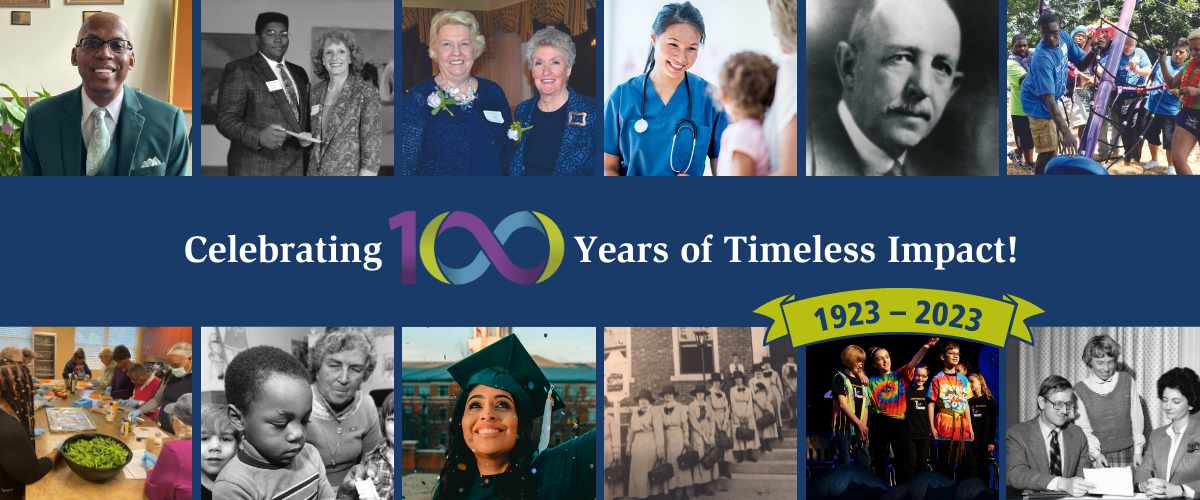
Milestone moments in
1920
1920s
1923
Seven visionary leaders came together in 1923 to establish the Waterbury Foundation to facilitate “the improvement of social and living conditions in Waterbury and vicinity.” The founders were: Frederick S. Chase, president of the Chase Companies; John P. Elton, vice president of the American Brass Co. and shareholder of the Elton Hotel; John H. Goss, and officer of the Scovill Corp.; Lewis J. Hart, officer of the Patent Button Co.; Arthur R. Kimball, publisher of the Waterbury American; Alice E. Kingsbury and Katherine H. Pomeroy.
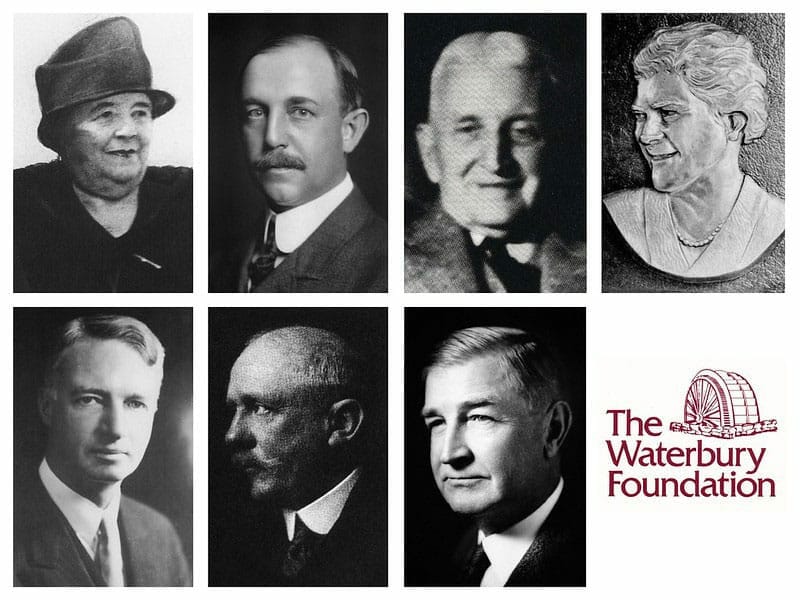
1923
The Waterbury Foundation was formally incorporated on June 5, 1923, by an act of the Connecticut legislature. It was the first community foundation in the state, and only the twenty-third in the nation. Shown here is an original certificate that shows the act of the legislature incorporating the Foundation.
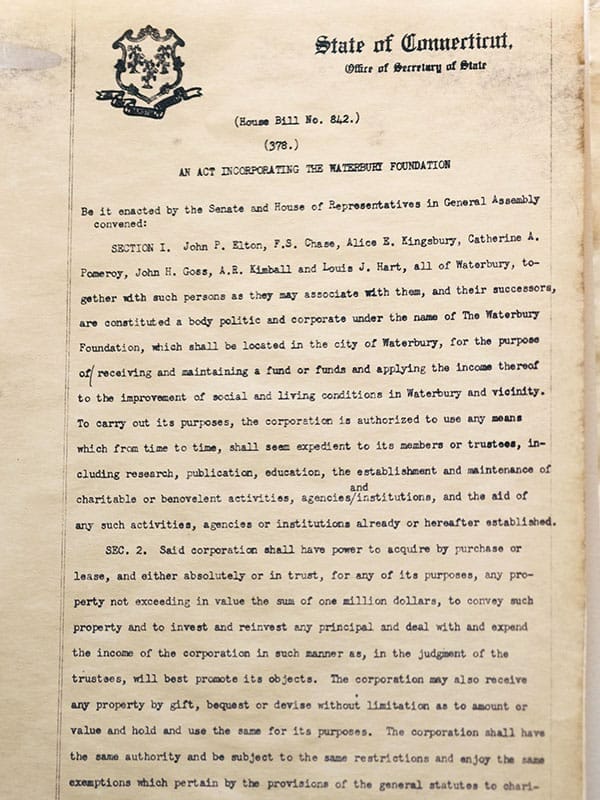
1924
Visionary donor Katherine Pomeroy, one of seven founders of the newly created Waterbury Foundation (now Connecticut Community Foundation), makes a $5,000 gift to the Foundation—its first contribution.
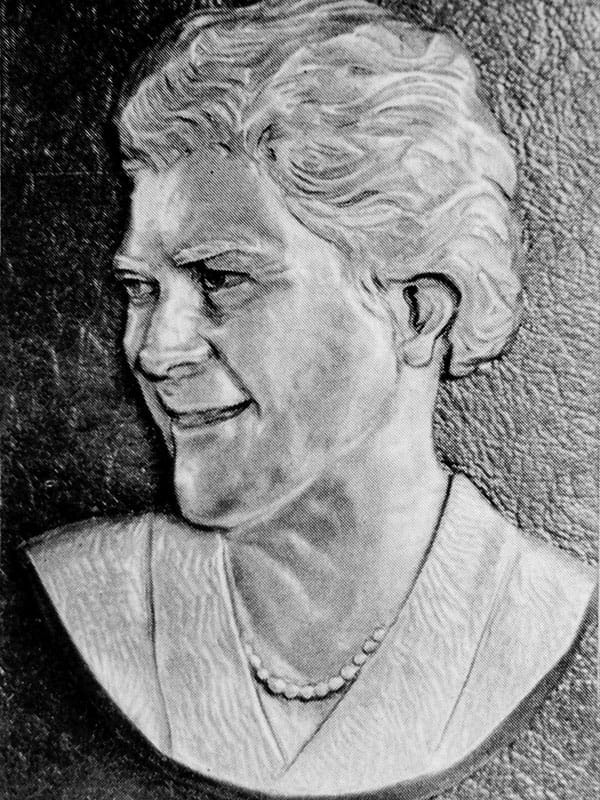
1924
The Foundation’s first and longest serving Board Chair, John Elton, serves in that role from 1924-1947. Elton, an executive at the American Brass Company, also served as Waterbury’s mayor.
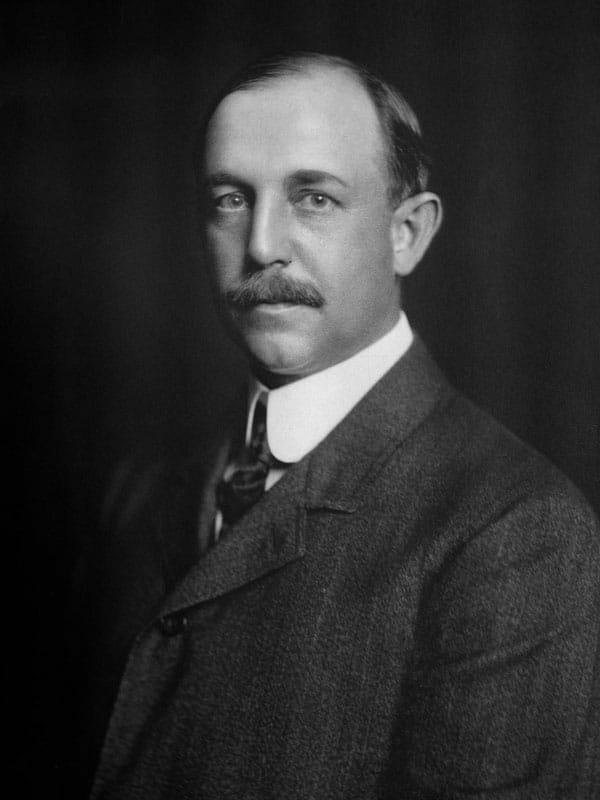
1924
The seven founders had their first official meeting in Waterbury, CT at Lincoln House at 35 Field Street, which housed charitable organizations, and which is next door to the Foundation’s current home.
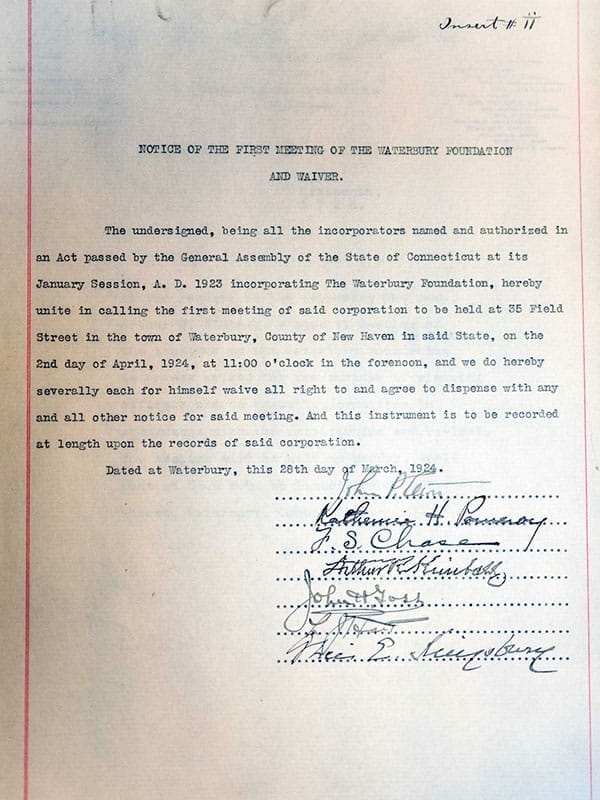
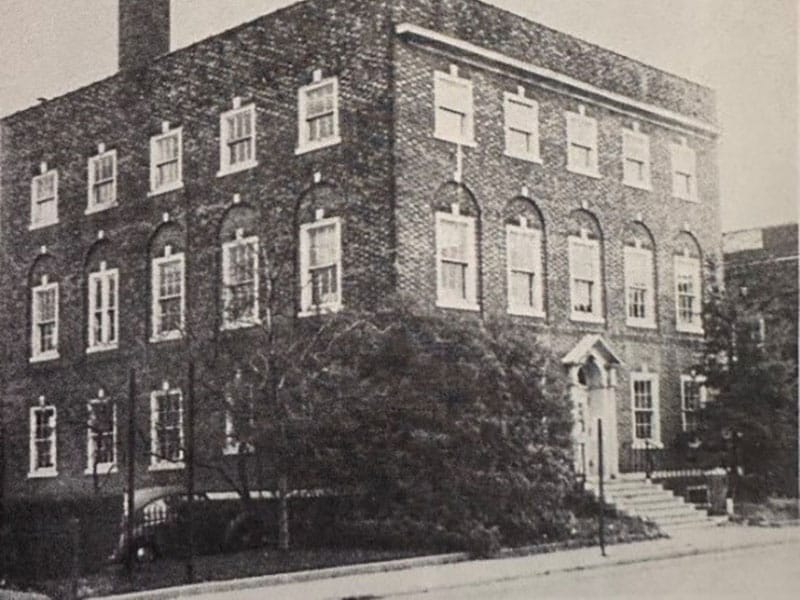
1927
Words from The Waterbury Foundation’s original Certificate of Incorporation
“The purpose of the Foundation is “To improve the social and living conditions within Waterbury and vicinity” and “to assist organizations that are doing more or less new and experimental work”.
1929
1920s-1950s: In pursuit of its mission "to improve the social and living conditions of Waterbury and vicinity," the Foundation devotes a significant portion of its resources in its early decades to address health challenges. Grants support mental health providers, efforts to combat tuberculosis, a nonprofit health clinic, and children's psychological services. In 1929, Alice Morton Chase establishes the Jennie H. Morton Memorial Fund in her mother’s honor to support visiting nurses; to this day, the Foundation awards grants every year from this fund to make visiting nurse services available, as Mrs. Chase intended.
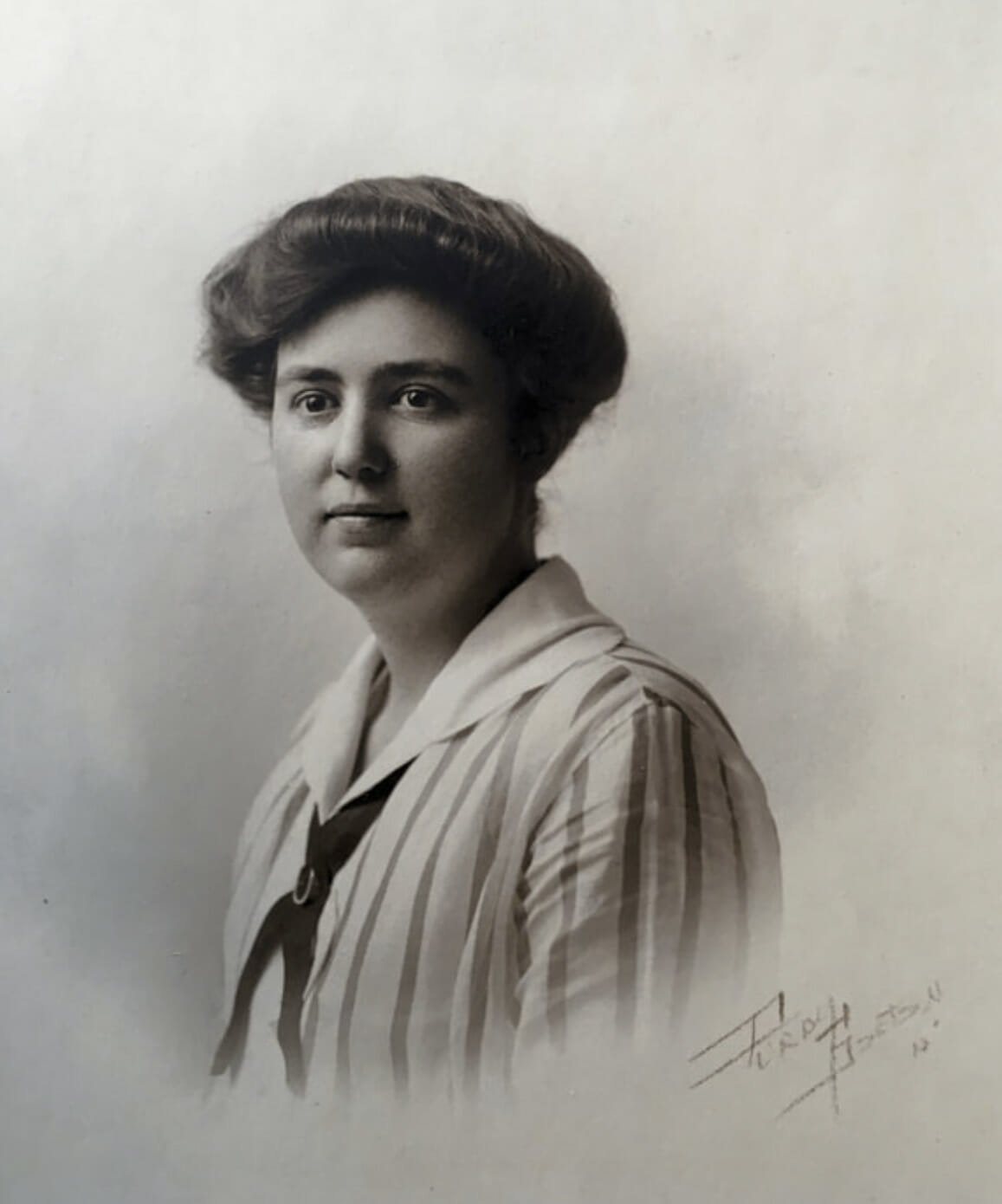
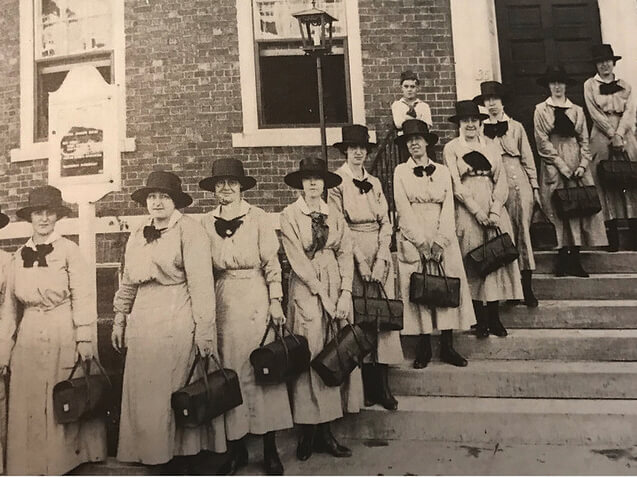
1930
1930s
1933
A photo of the Foundation’s leatherbound minutes from the early 20’s through the 70’s. The earliest minutes show grants to the Corner House Association, which did protective work for underprivileged girls, and to the Lincoln House Association—which later became Family Services of Greater Waterbury, and which served the community until 2016—for a visiting housekeeper and nutritionist.

1934
Several early grantees continued to receive support from the Foundation for decades, and some continue to serve the community. Some of these organizations are:
1934
Pearl Street Neighborhood House’s original purpose was “to provide social and recreational activities for members of the black community in Waterbury.” The Foundation funded Pearl Street from the 1930s until it closed its doors in the late 1980s.
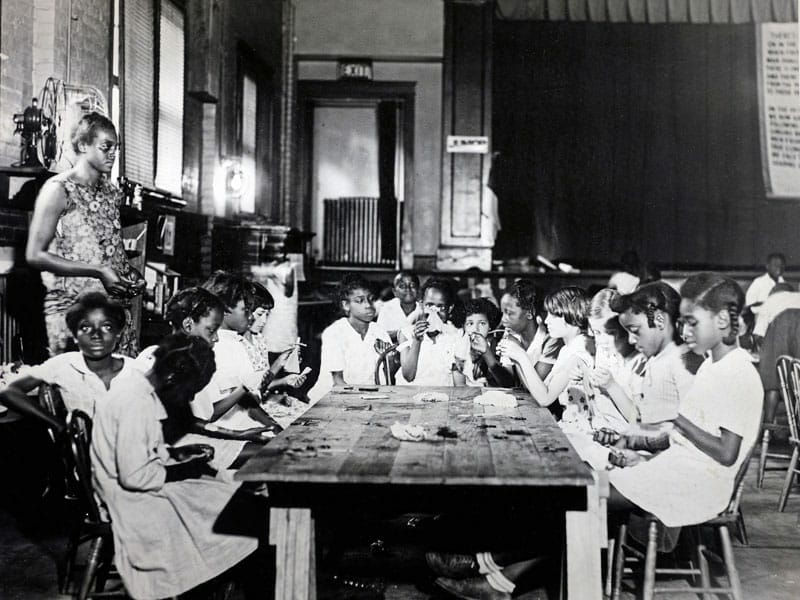
1934
Southmayd Home established its permanent residence in Waterbury in the 1920s. Subsequently, the Foundation started aiding the expansion of the residential facility, catering to 35 senior women. Just as Southmayd Home is still meeting the needs of its residents to this day, the Foundation continues, through its East Hill Woods Fund, to support efforts to help people in our region age successfully and remain healthy, informed and engaged.
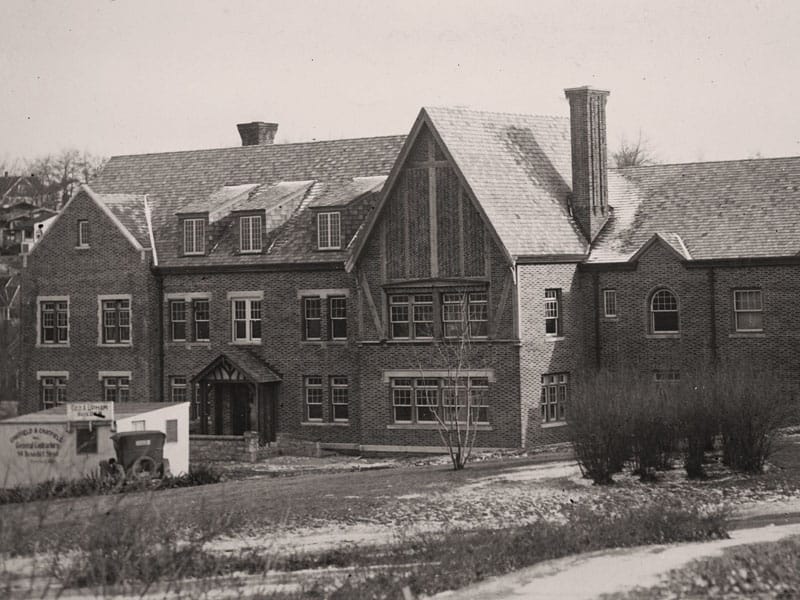
1934
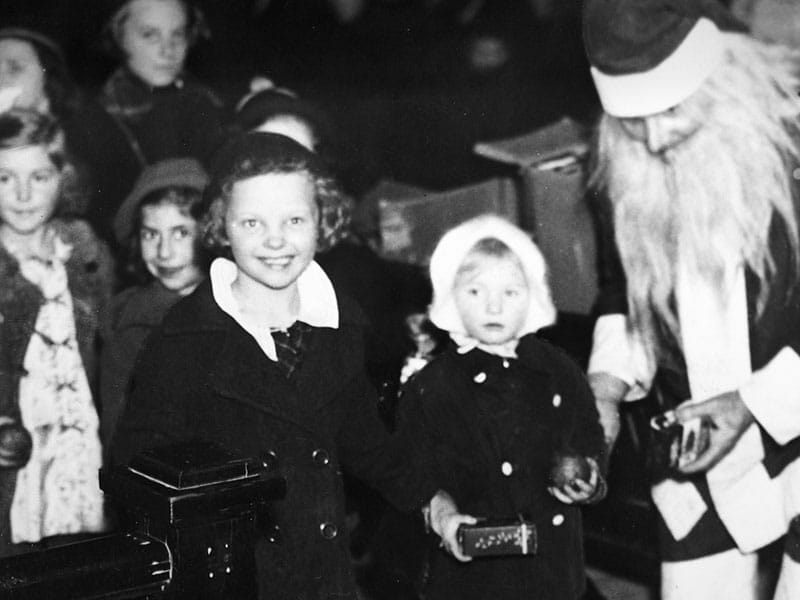
1936
The Connecticut Junior Republic (now CJR) was established in 1904. Since the 1930s, the Foundation has supported many of the CJR’s efforts to provide care, treatment, early community interventions, education and opportunity for thousands of children.
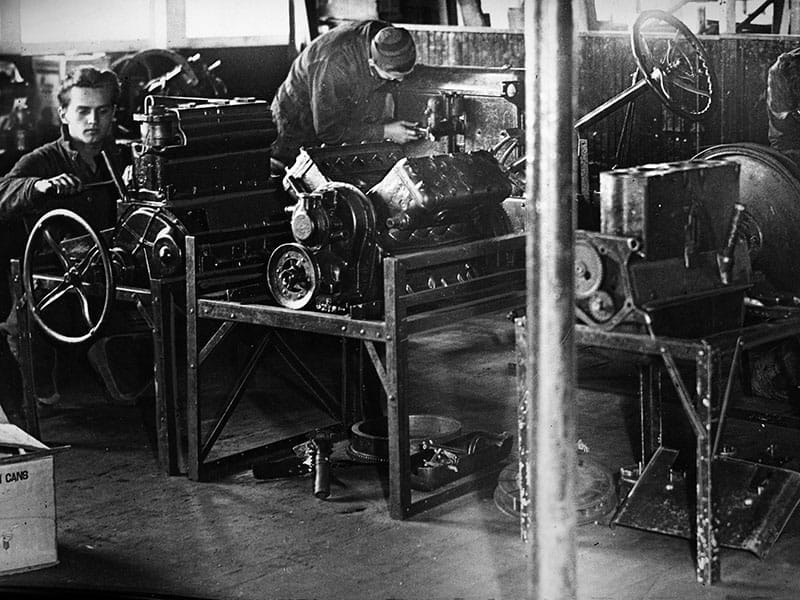
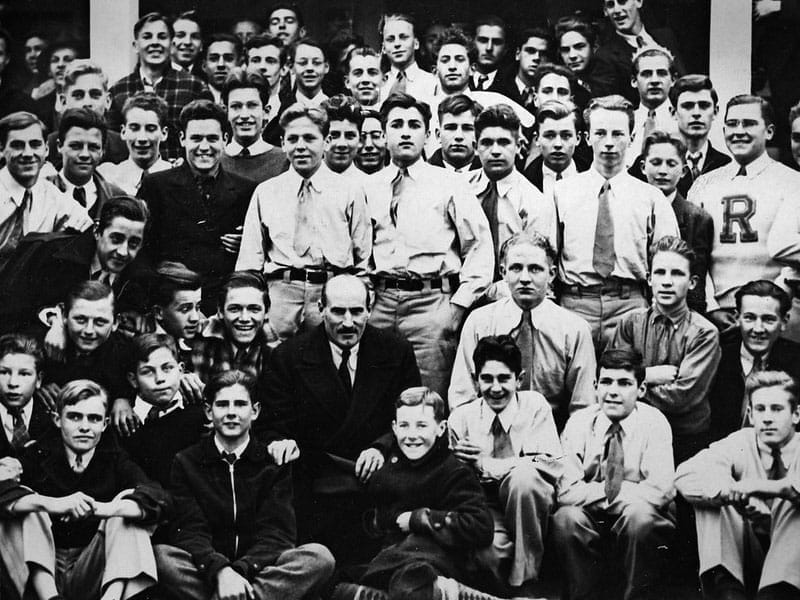
1939
Tuberculosis was one of the leading causes of death in the United States from the early 1900s to the 1940s. The Foundation funded the Anti-tuberculosis League and Gaylord Farm Sanitarium from the mid-1930s to the 1940s to address this pressing public health crisis. In 1973, the Anti-tuberculosis League became the American Lung Association, which continues to receive support from the Foundation through the Edith M. Kingsbury Fund, which Ms. Kingsbury established through a bequest in her 1927 will.
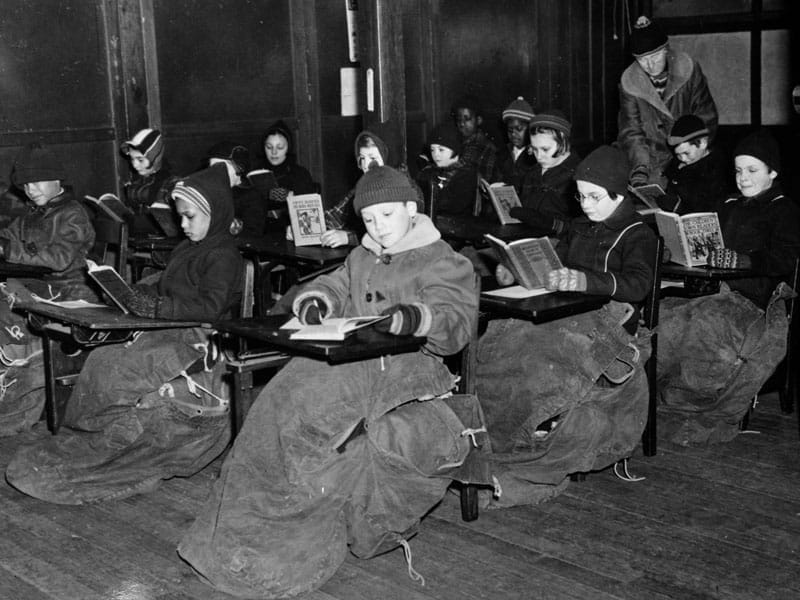
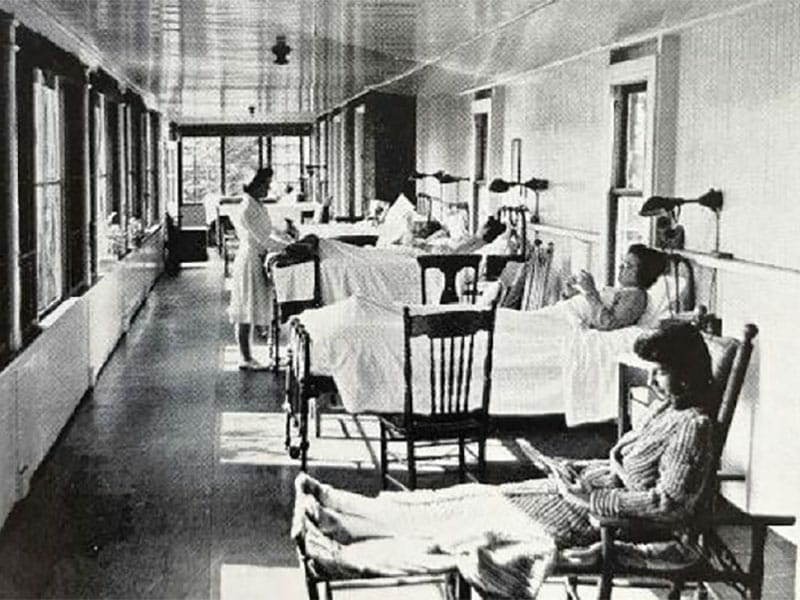
1940
1940s
1945
The Girls' Club (now Girls, Inc.) received its first grant from the Foundation in 1934. The Girls' Club, which started as the Waterbury Industrial School in 1864, has been serving girls in Waterbury for over 100 years. Nine decades after this first grant, Girls Inc. continues to help girls to navigate gender, economic, and social barriers, and to grow into healthy, educated, empowered and independent adults.
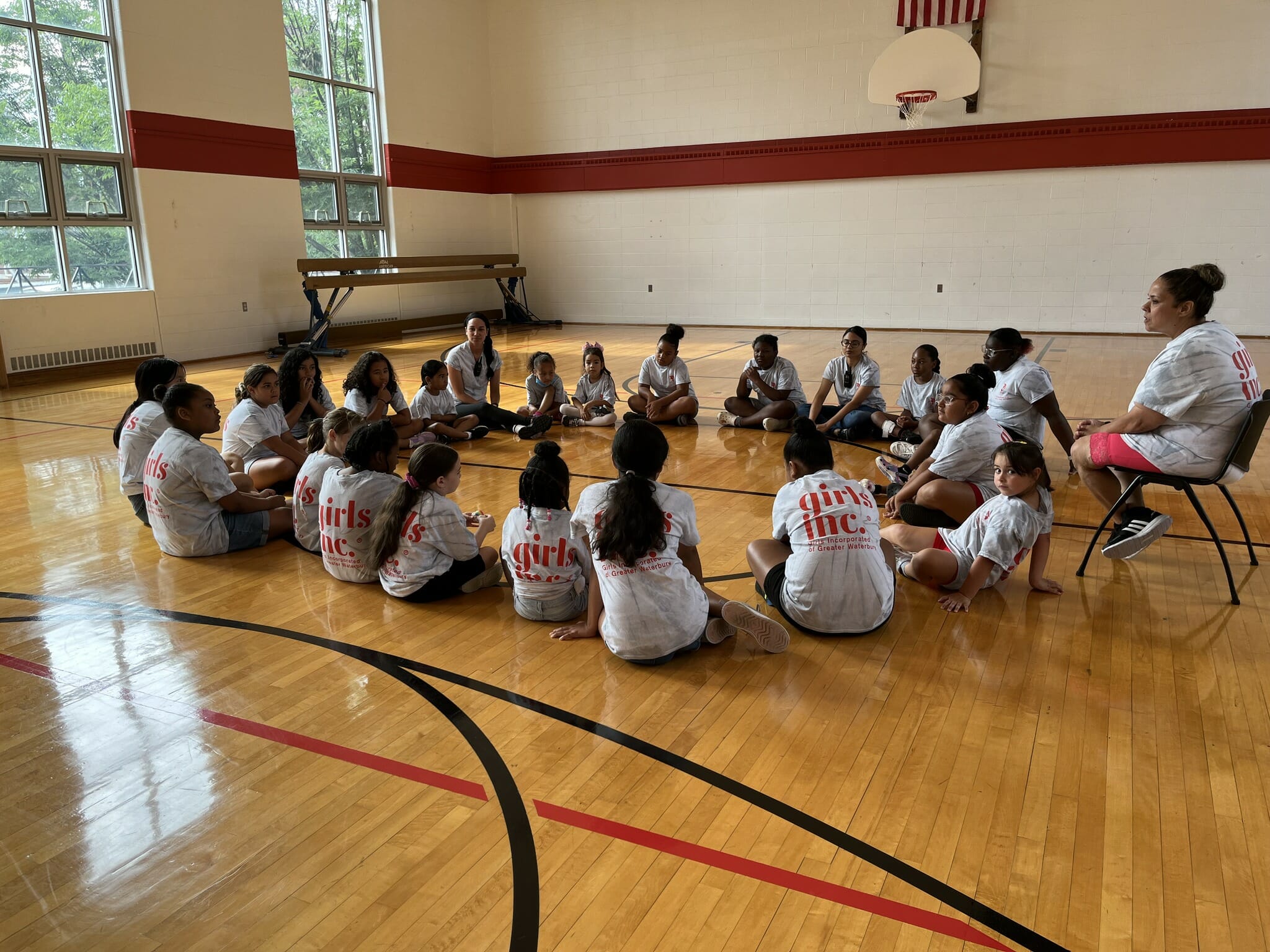
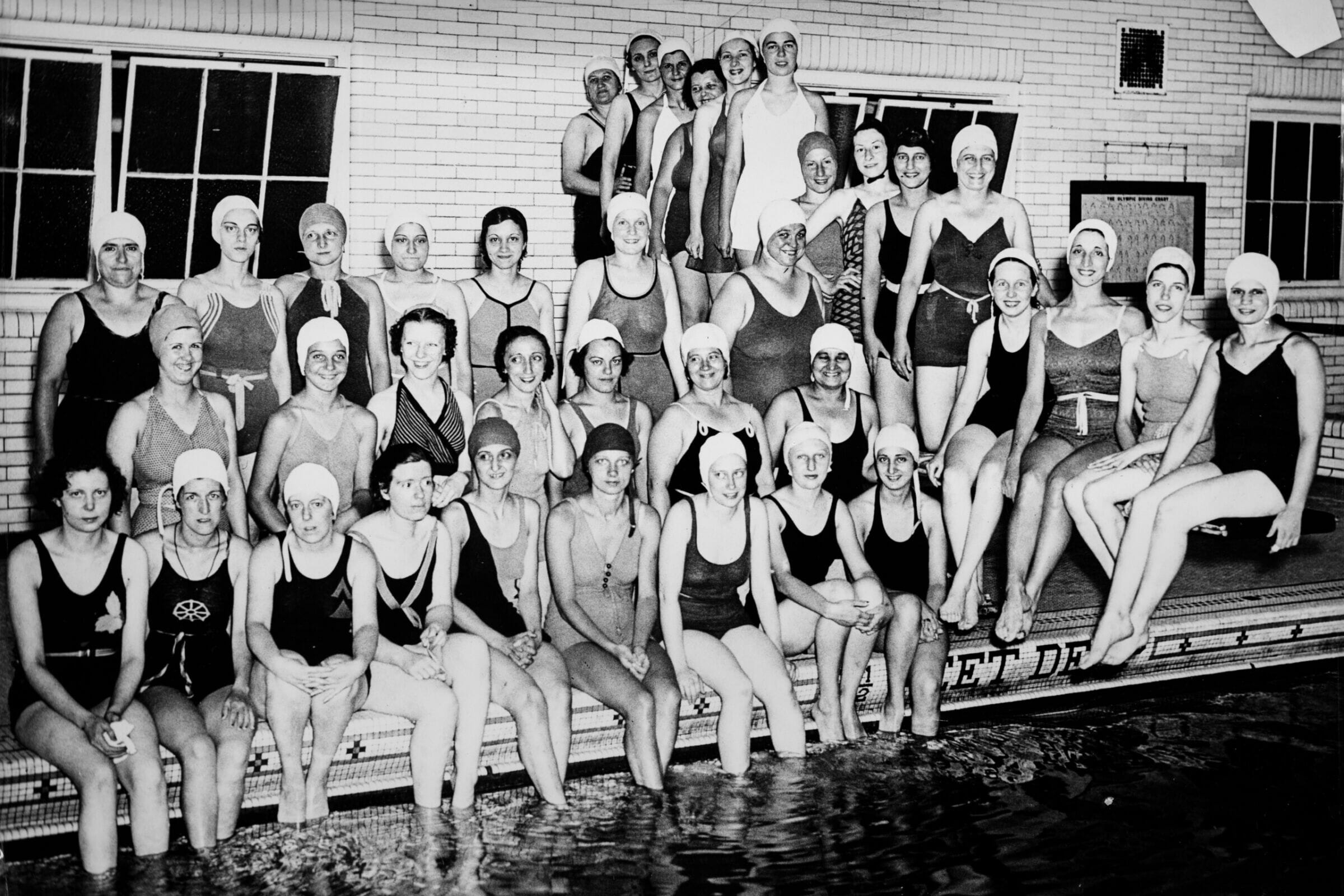
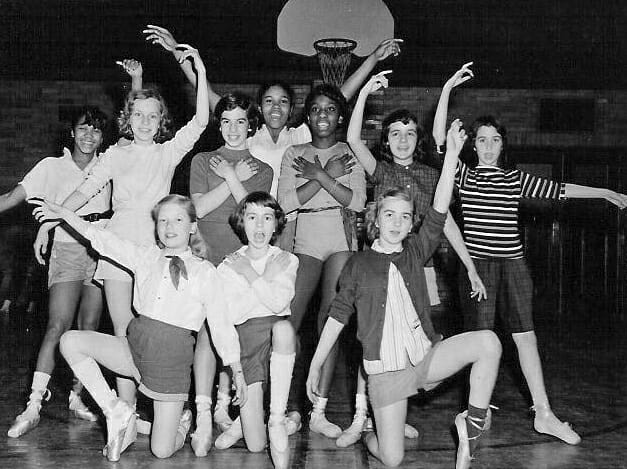
1945
The Foundation has supported and partnered with the Waterbury’s Young Men’s Christian Association (YMCA) since the mid-1940s. The Greater Waterbury YMCA was established in 1858 and is the oldest YMCA in Connecticut.
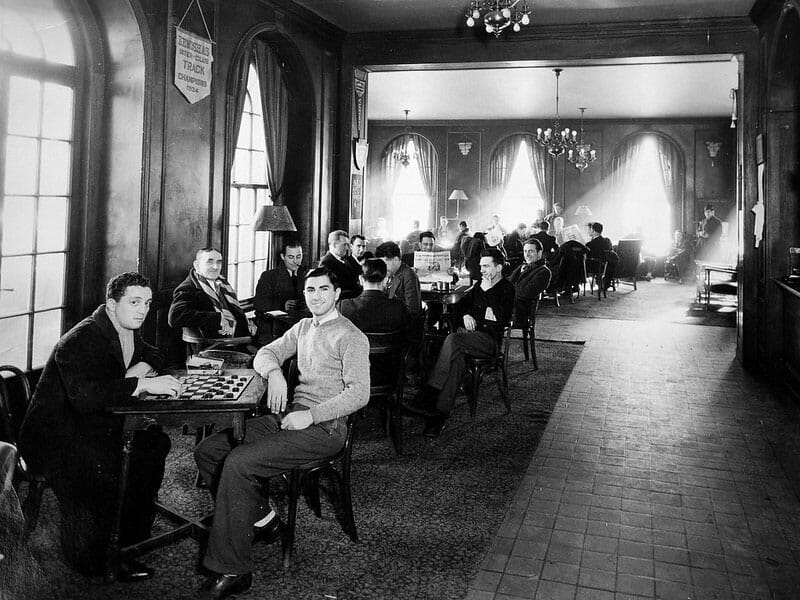
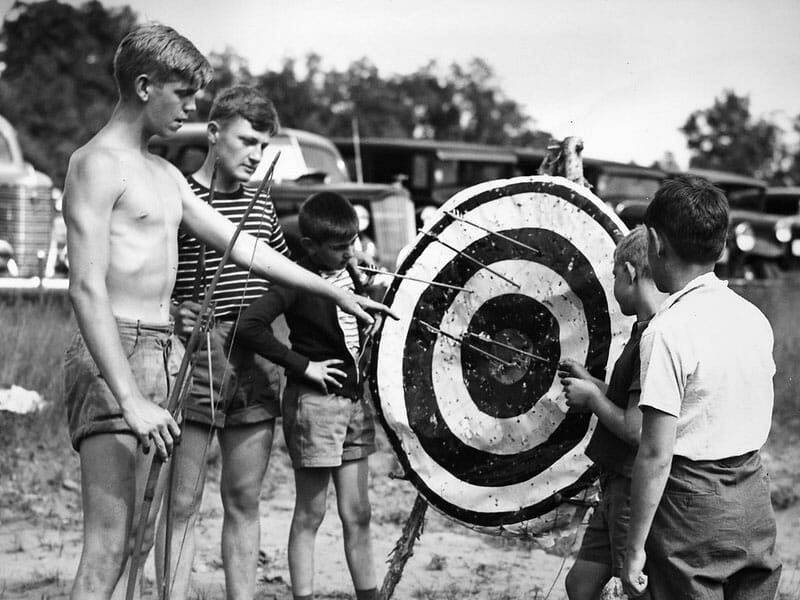
1948
1948-1951 Bennet Bronson served as Board Chair.
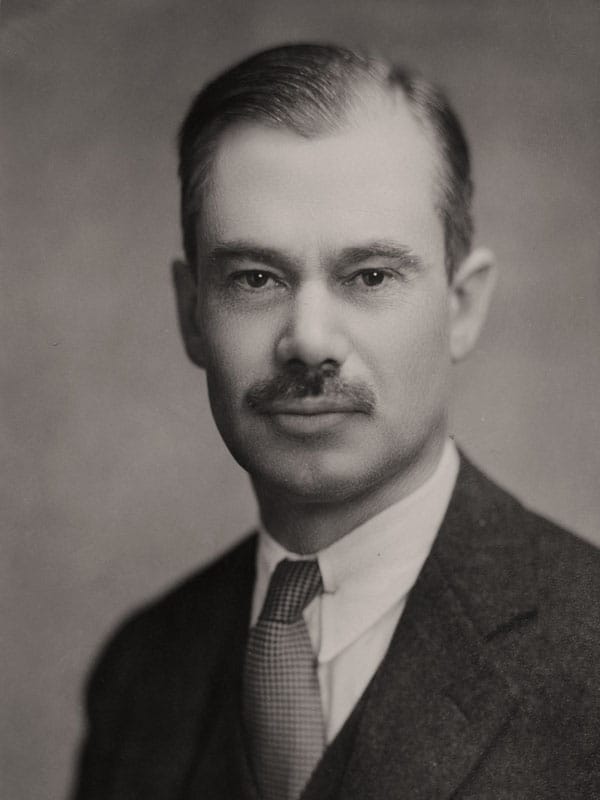
1949
The new position of Publicity Agent was formed and held by Rodney Chase to publicize the Waterbury Foundation’s purpose and work, and thereby expand philanthropy in the community.
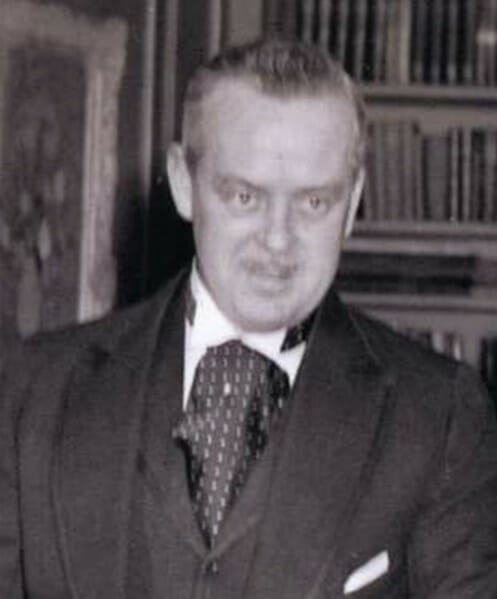
1950
1950s
1950
By the 1950s, the funds available for the Foundation to grant each year had grown significantly. The board of trustees established the Foundation’s first grant committee to review and recommend grants. The result was the approval of larger, more impactful grants, the first of which supported the work of the Child Guidance Clinic and Pearl Street Community Center.
1951
Elton Wayland serves as Board Chair of the Waterbury Foundation from 1951-1963. As of 1951, $85,583 had been distributed to charities in the area since the foundation was established in 1923.
1952
The post-war economic boom of the 1950s led the Foundation to establish a subcommittee of trustees to recommend larger grants. The Waterbury Boys Club—now the Boys and Girls Club of Greater Waterbury—was among the local organizations to receive support regularly through the 1950s. Pictured here, the Maia brothers perform in a 1952 Boys Club Glee concert.
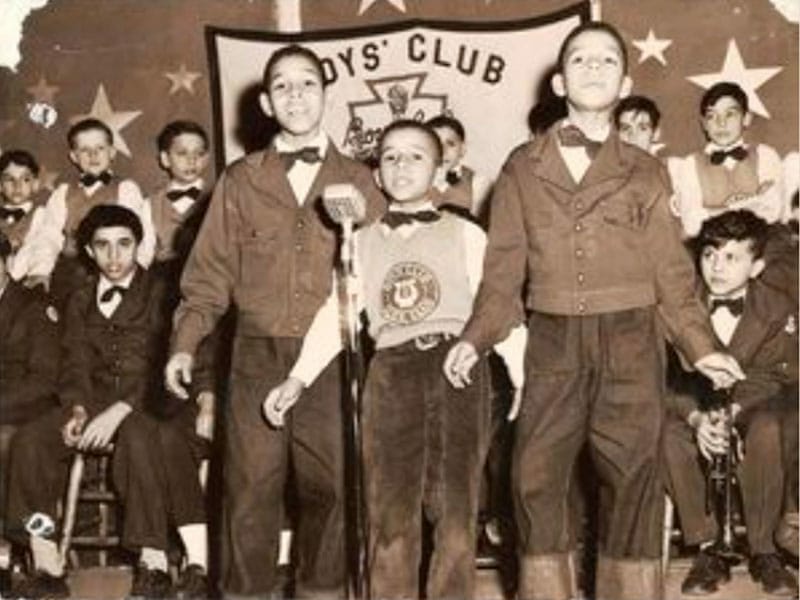
1953
The Child Guidance Clinic, established in 1951, was among the recipients of larger grants that began in the 1950s. The organization—which became Wellpath in the 1980s and then ultimately Wellmore Behavioral Health in 2011—reflected psychiatry's push to reach more people in the community with mental health education, early intervention, and treatment services.
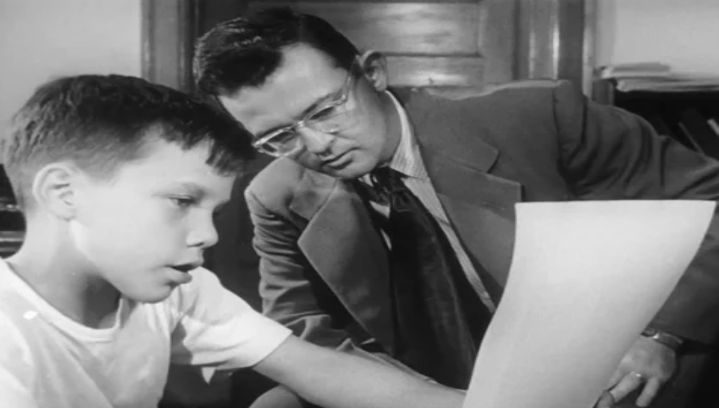

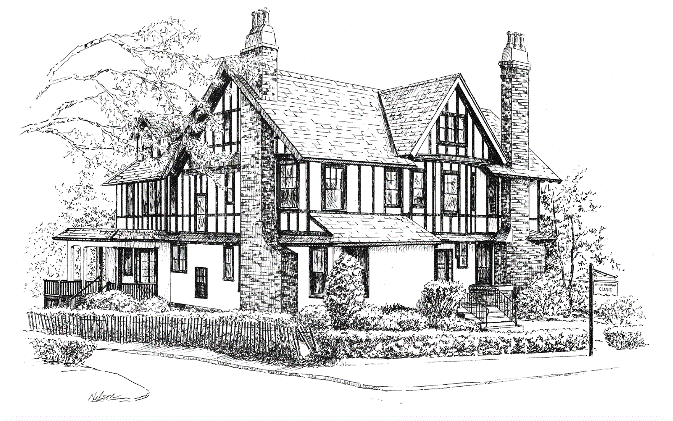
1955
The Foundation provided grant support to the American Red Cross for disaster relief following The Flood of 1955, which was one of the worst disasters in Connecticut's history. Two back-to-back hurricanes saturated the land and several river valleys in the state, causing severe flooding in August 1955. The Naugatuck River was one of the most affected and, within the Foundation’s service region, both Waterbury and Naugatuck suffered severe losses. Statewide, 87 people died during the flooding, and property damage across the state was estimated at more than $200 million, in 1955 figures. Watch more about the 1955 flood YouTube.

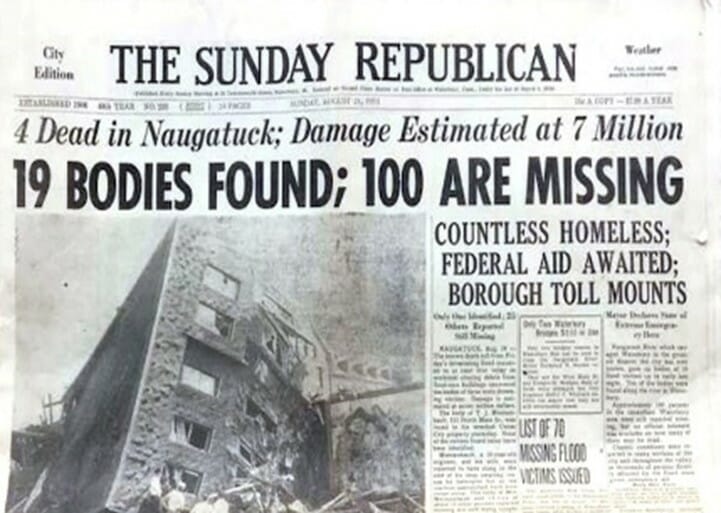
1960
1960s
1964
Former Vice Chair, Donald W. Henry was elected as the new Board Chair of the Foundation and would go on to serve up until 1968.
During his tenure, the Foundation elected its first Executive Committee with Board Chair Donald W. Henry, Vice Chair Ex-Officio, Max R. Traurig, and Trustees Ernest A. Anderson, Jr, Elton S. Wayland and Edward S. Wotkyns.
1968
The Foundation sponsored the Greater Waterbury Campership Fund soon after it was founded and has continued to periodically provide funding for summer camp programs for children in Greater Waterbury and Litchfield Hills.
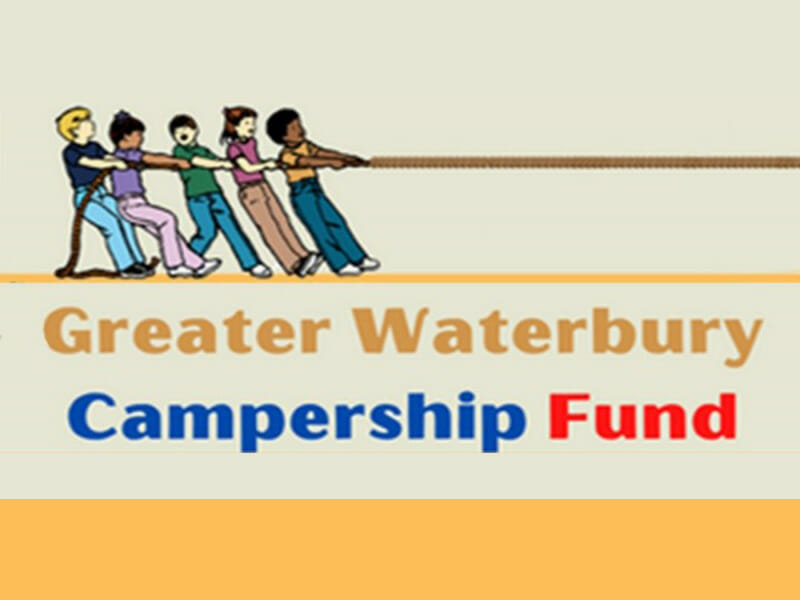
1968
Max R. Traurig became Board Chair and served in that role through 1970.
The Foundation awarded $26,160 from the General Funds to 21 different agencies.
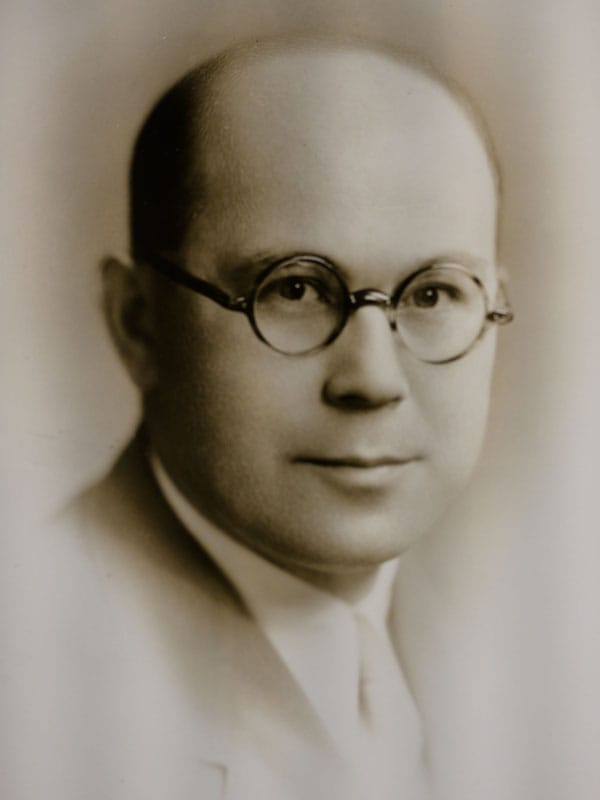
1969
New grantees emerged in the 1960s, including Waterbury’s NAACP, which received its first grant in 1969. Five decades later, the NAACP remains a vibrant organization and frequent grantee.

1970
1970s
1970
William Boise served as Board Chair from 1970-73.
In 1970, Boise established the Allocations Committee, whose members became actively involved in investigating grant proposals and visiting grantee organizations.
The Foundation's assets increased to over $1.5 million as a result of a bequest of over $1 million from Katherine Pomeroy. In 1970, the Foundation awarded $67,752 in grants to 27 organizations.
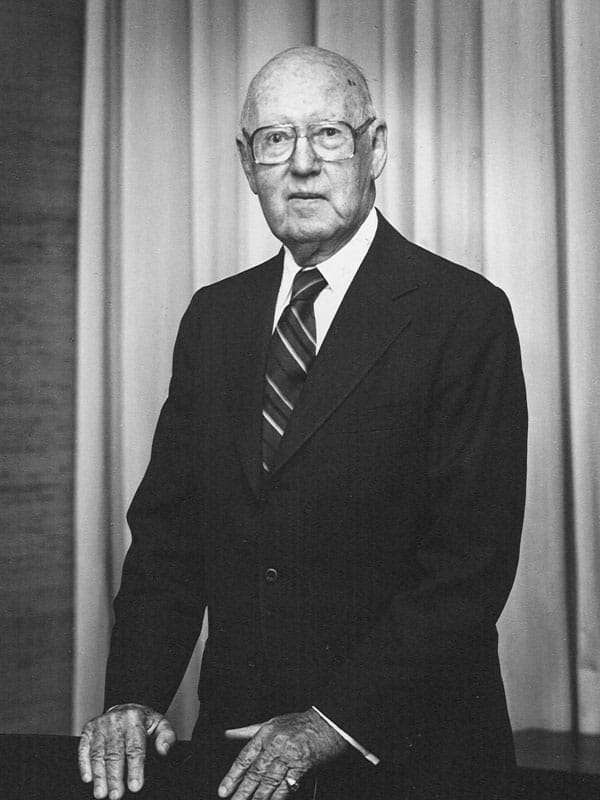
1971
Berkeley Community School (now known as Children’s Community School) was founded in 1969 by the Sisters of Mercy in the basement of the Berkeley Heights Housing Project.
In the 1970s, Foundation trustees, impressed by a tour of the new private, nonprofit school, made a $13,000 grant, the first of many grants throughout the years.
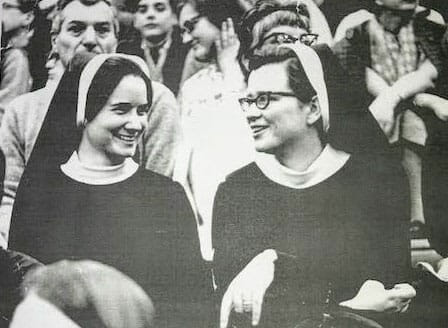
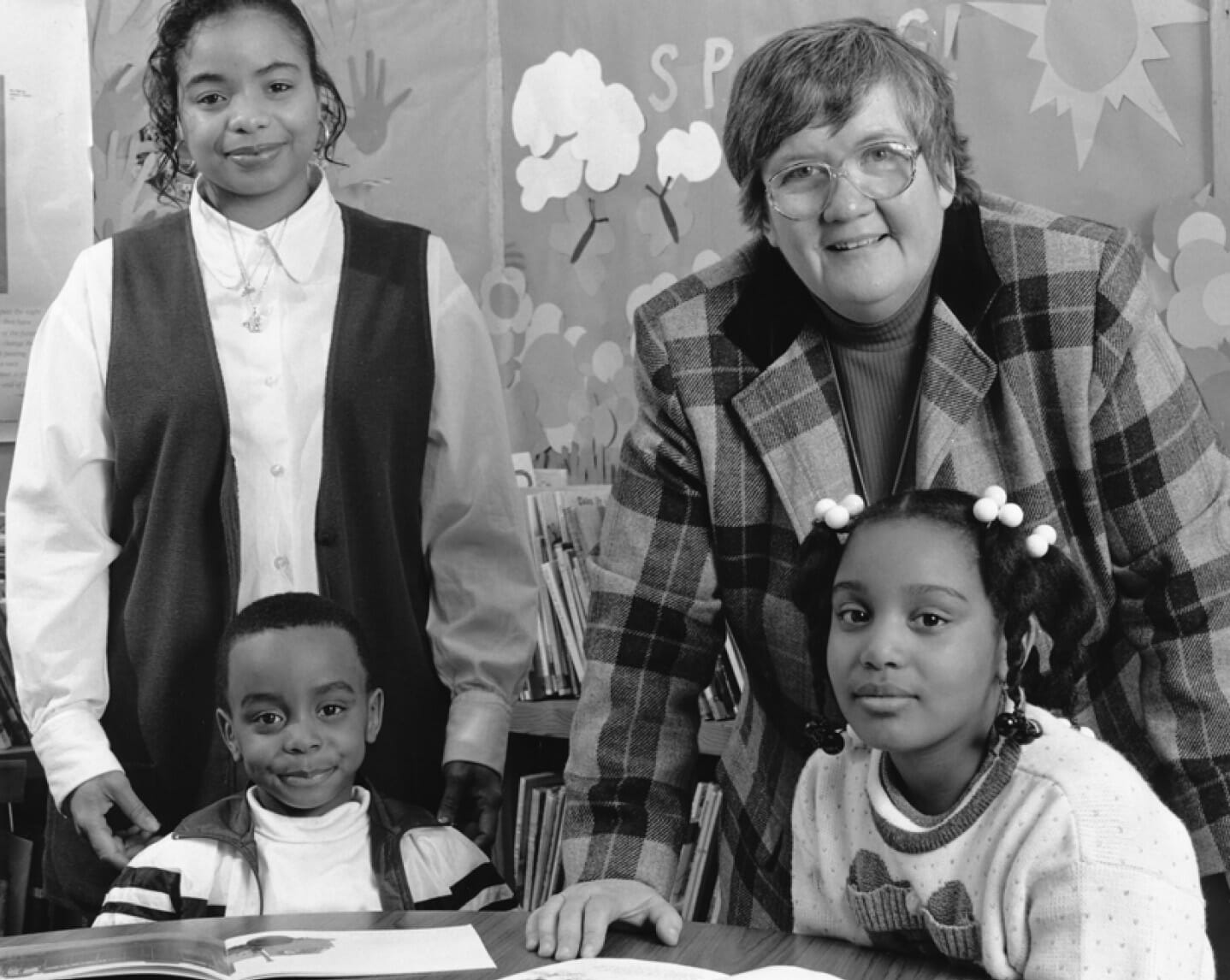

1972
The Foundation has a history of supporting land conservation and environmental initiatives, such as land trusts, trail maintenance, and forest cleanups, as well as efforts to build capacity within the land trust network and foster collaboration. Since the 1970s, we have supported land conservation and environmental projects undertaken by numerous local organizations, including The Institute for American Indian Studies, the Roxbury Land Trust, White Memorial Conservation Center, Friends of the Benedict Miller House, Flanders Nature Center, Audubon Center Bent of the River, the Thomaston Opera House, and the Mattatuck Museum.
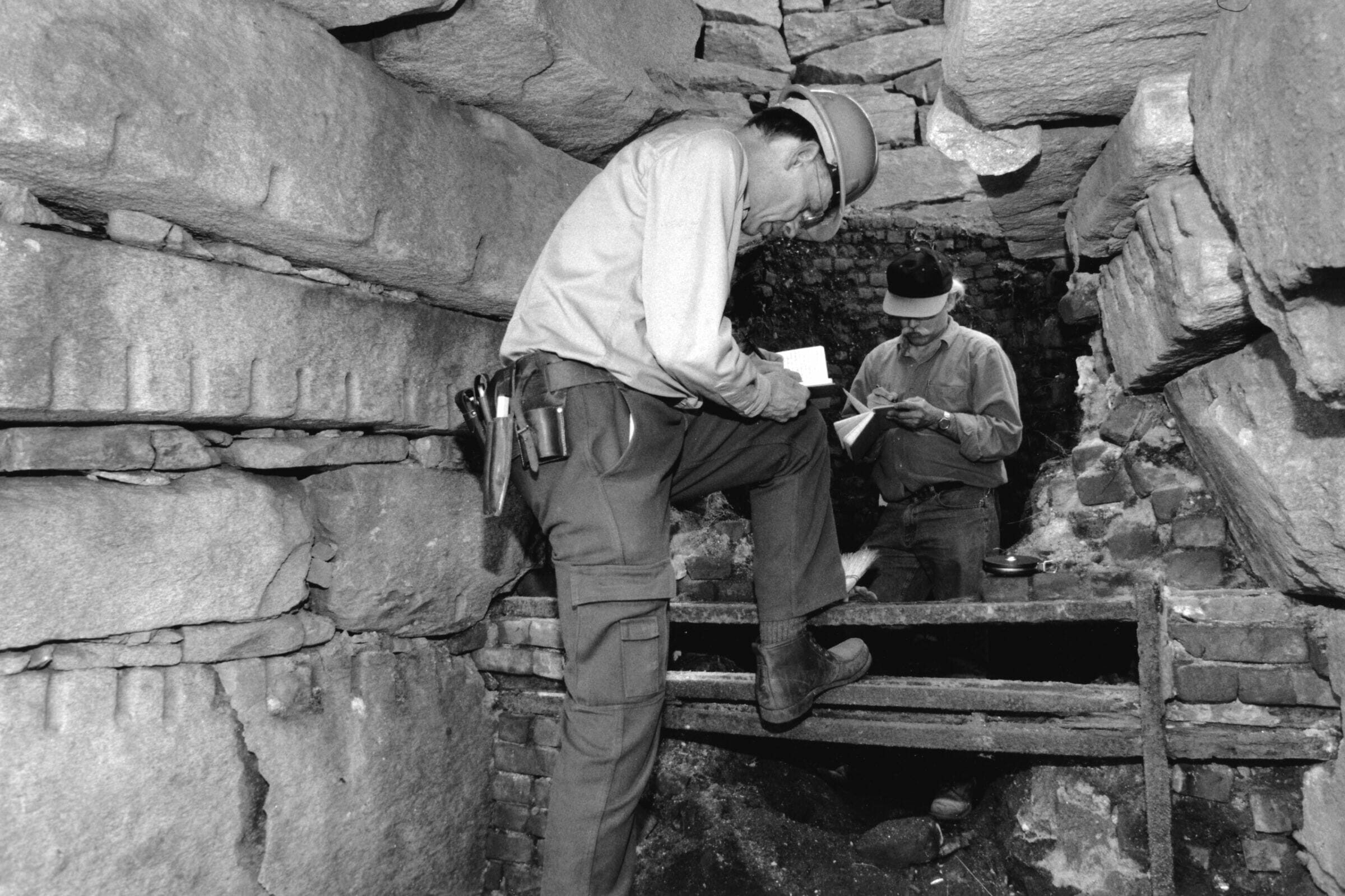
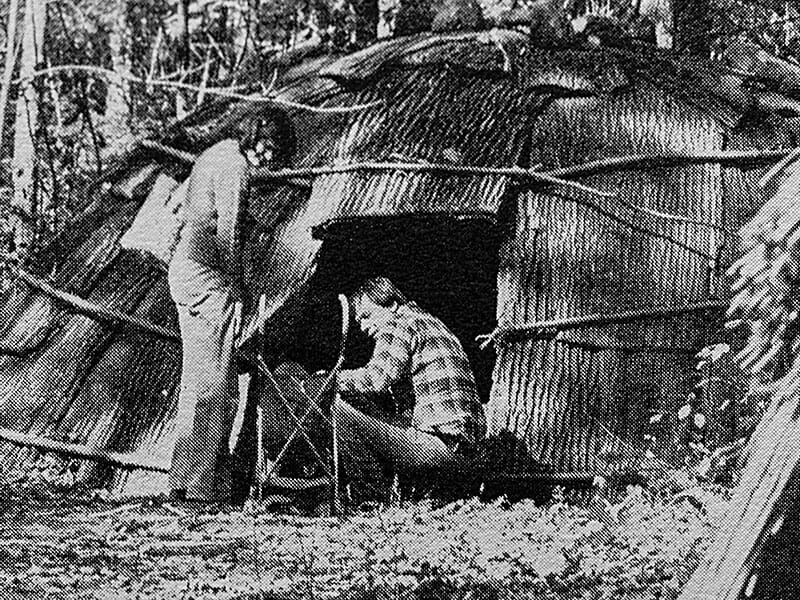
Today, we are prioritizing support for environmental justice initiatives, including local organizing, community gardens, and urban cleanup initiatives that aim to promote a healthier environment for all.
1973
Leavenworth P. Sperry Jr. served as Board Chair from 1973-1975.
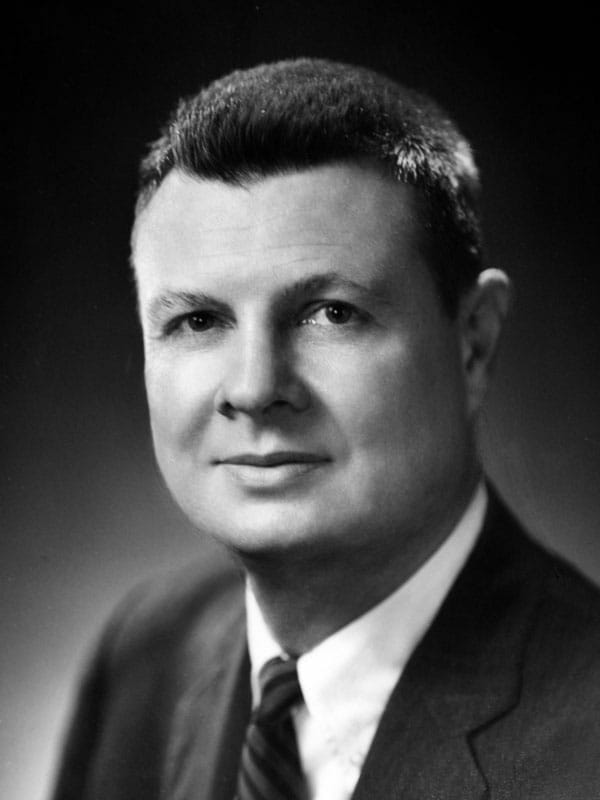
1974
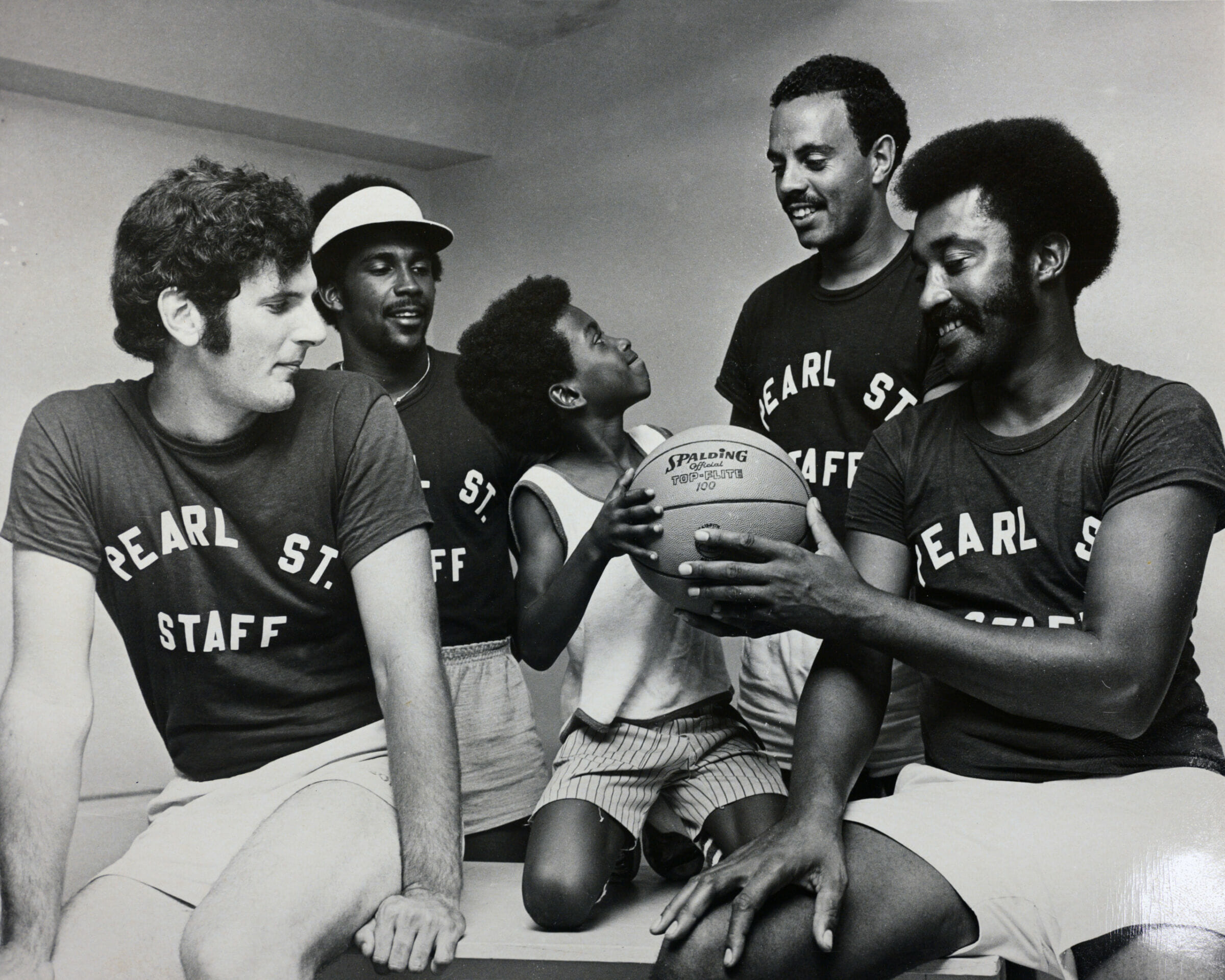
1975
Orton P. Camp Jr. served as Board Chair from 1975-1978.
From the mid- to late-1970s, approximately 30 organizations received grants totaling roughly $120,000 from the Foundation each year.
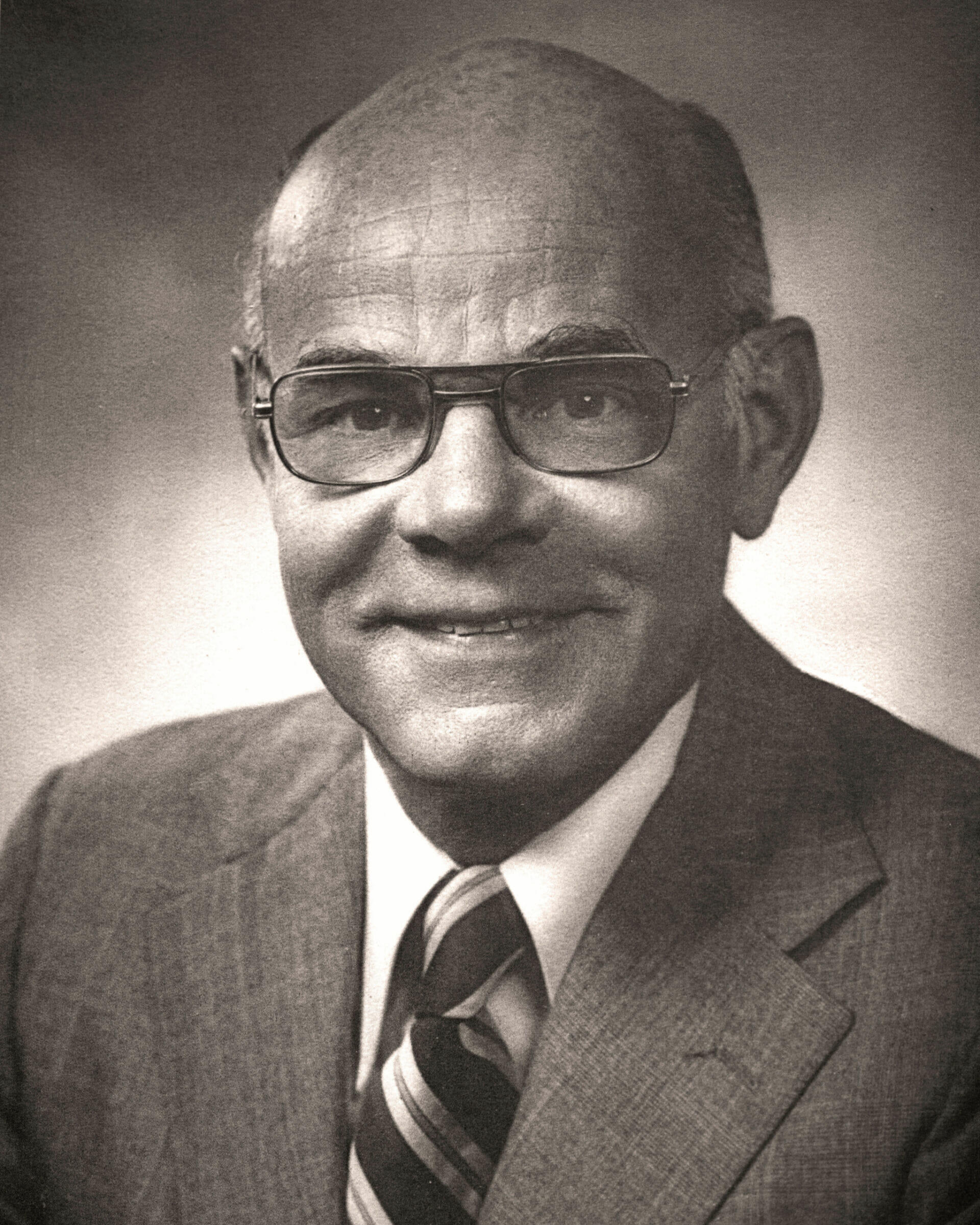
1977
The Foundation consistently funded the Kendall House throughout the 1970s to help women needing shelter, as well as those recovering from alcoholism.
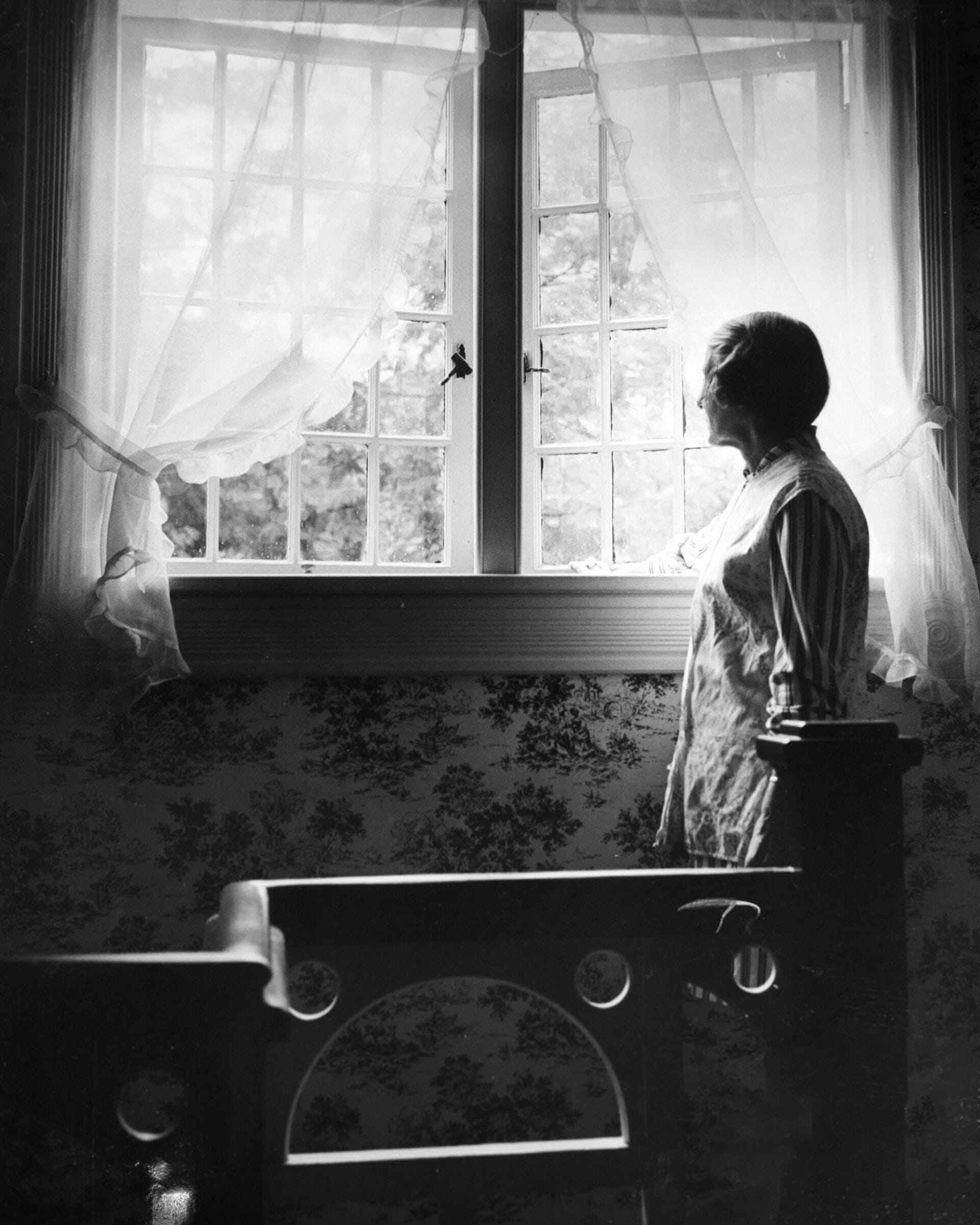
1978
In 1978, Priscilla Whittemore became the Foundation’s first female Board Chair. She served in that role through 1981; Priscilla believed in education, support for women and children and travel opportunities for young people in their formative years.
In 1998, after Priscilla’s death, the Foundation received $500,000 from her estate. Per her request, the income from her legacy is used to support all three of her interest areas, especially travel for youth.
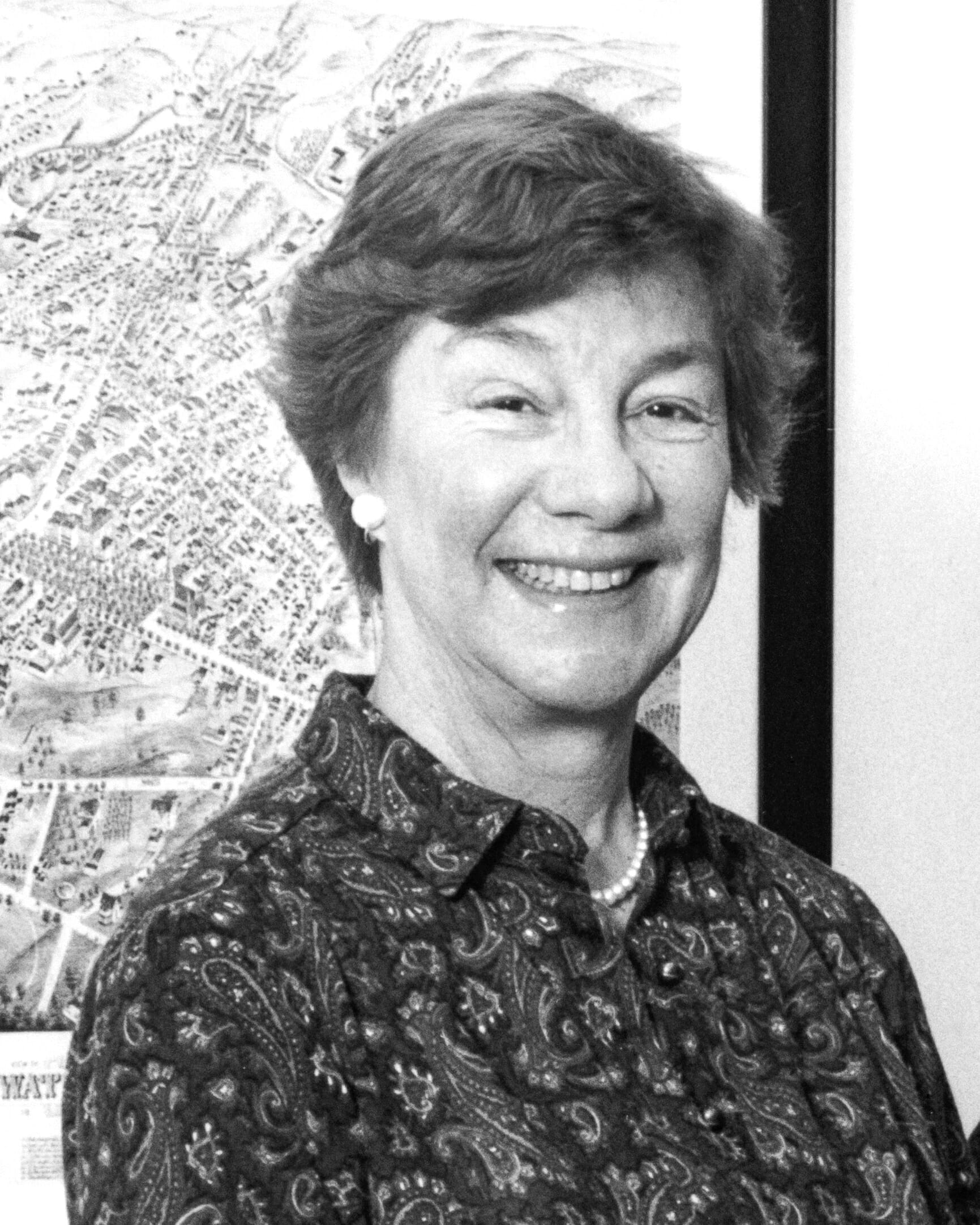
1980
1980s
1981
Nelson P. Hart served as Board Chair from 1981-1987.
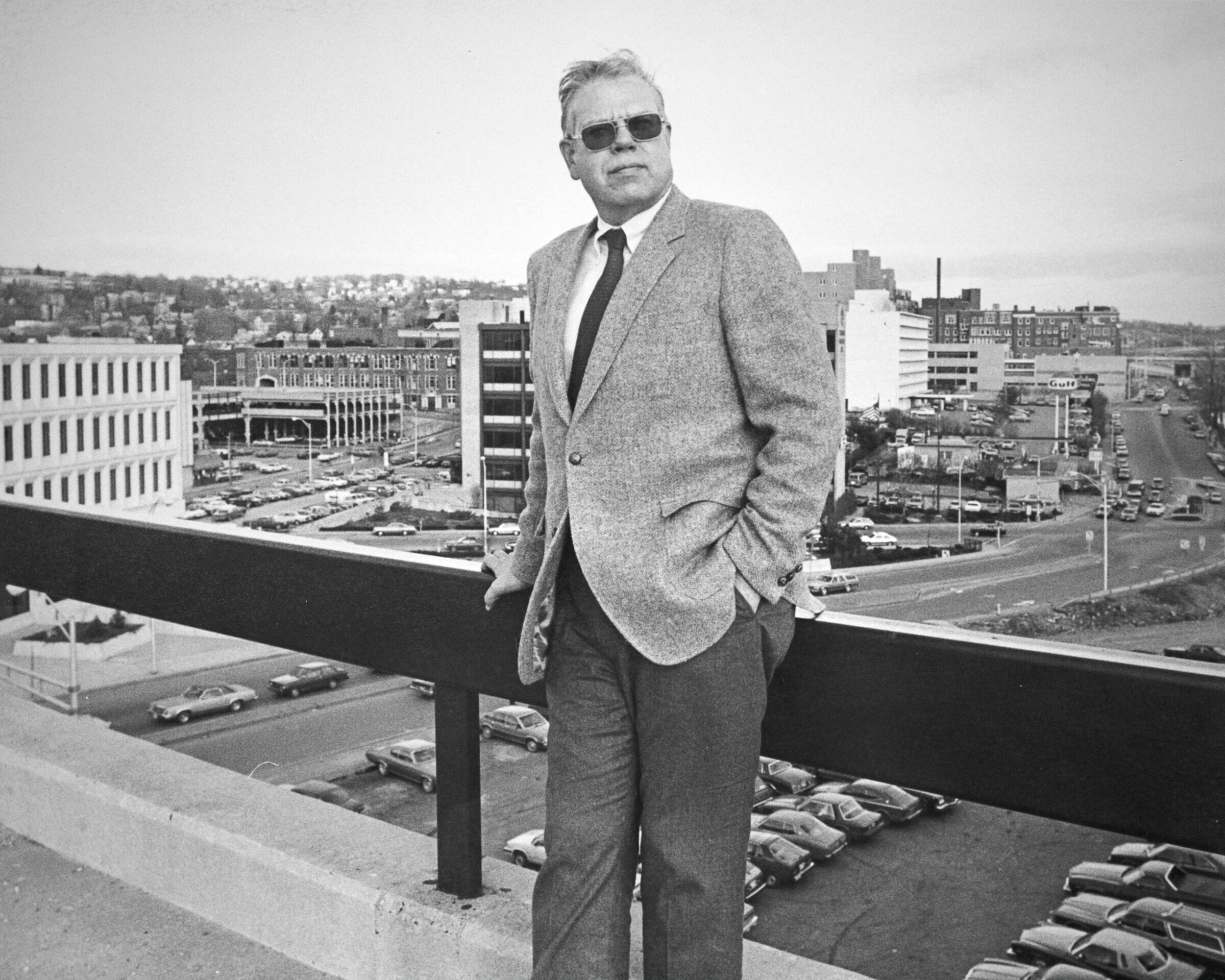
1982
The Foundation opens its first office with staff in Waterbury’s historic Lilly Building with Ingrid Manning (pictured standing) as the Foundation’s first employee. At that point, the Foundation’s assets totaled about $2 million. Ingrid went on to serve as the Foundation’s chief executive for 30 years. By the time she retired in 2012, the Foundation was managing a $75 million endowment.
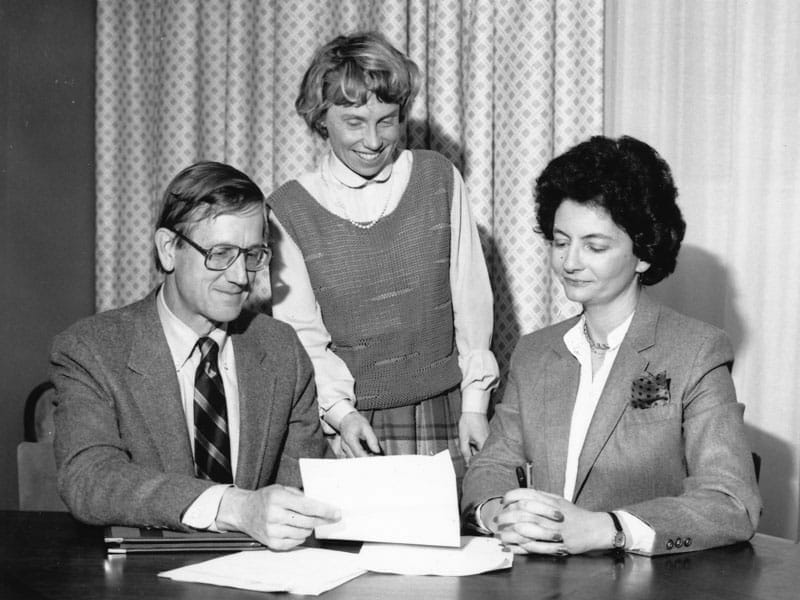
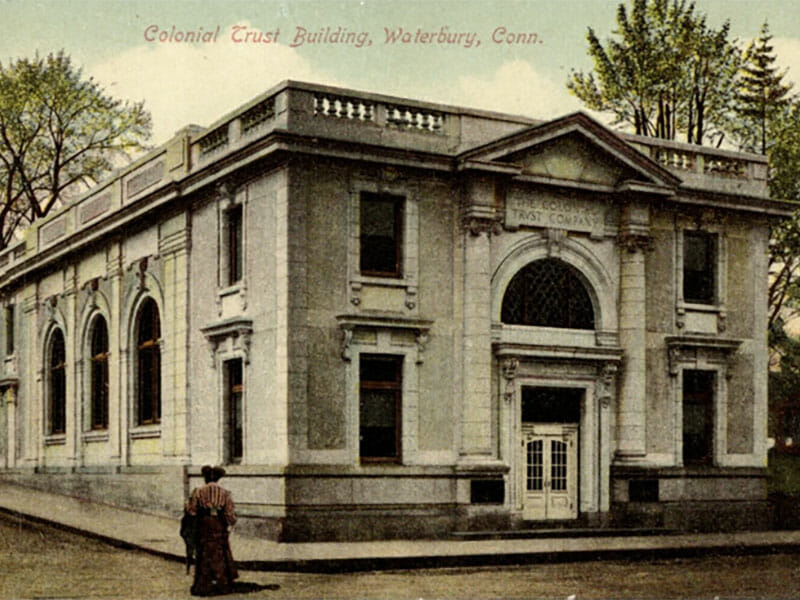
1982
A Foundation grant provided for a piano, projector, cabinets, and trips for older adults served by the Mount Olive Senior Citizens Center.

1982
In 1982 the Foundation made a $10,000 donation to the American Red Cross Waterbury Chapter to help the 120 people left homeless by a deadly Prospect Street apartment fire. Board Chair Hart said the Foundation broke policy in making the gift, as it was not in response to a request for funds; however, Hart stated, "We saw the urgency of the situation concerning the fire victims, and the Foundation decided to make the grant without having a request."

1983
United Way President Gary Post shows Foundation Board Chair Nelson Hart floppy disks. The Foundation supported organizations in building their capacity with technology. Pictured here, the United Way.
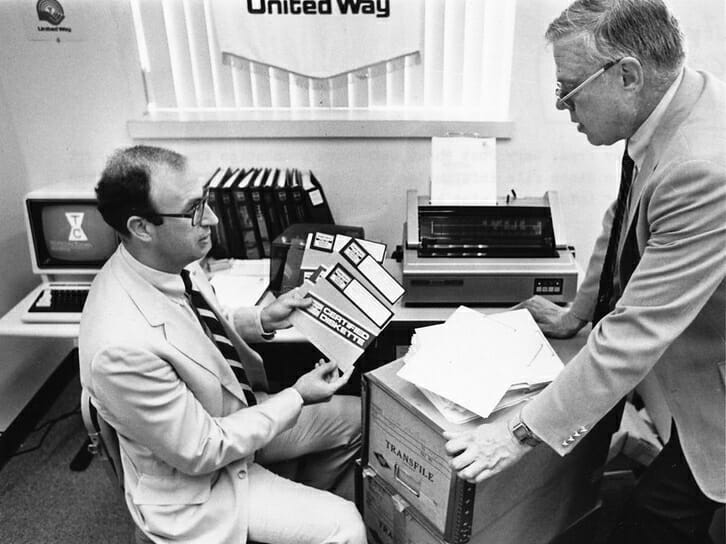
1983
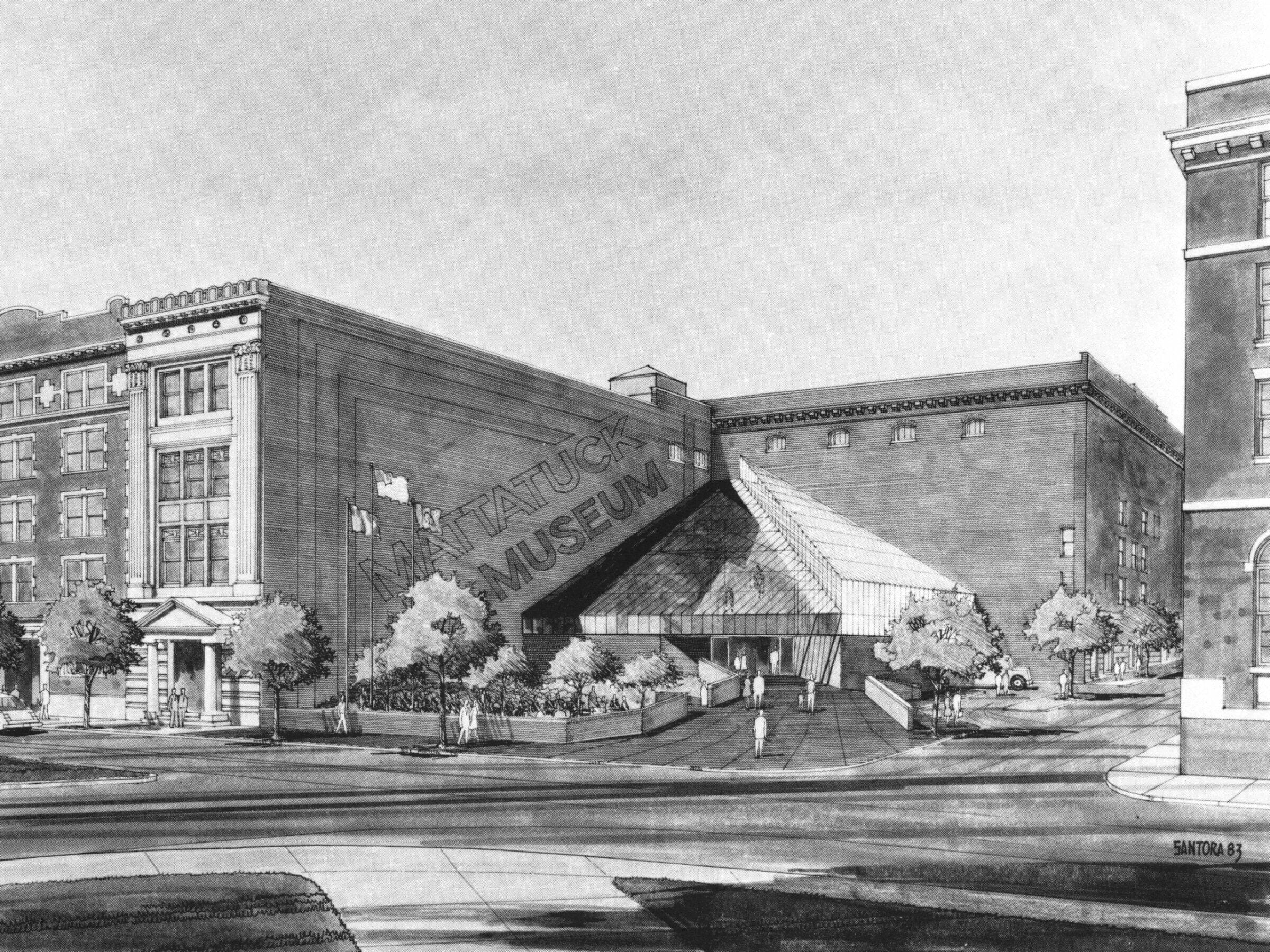
1983
The Foundation provided funds to enable the Children's Community School to renovate and furnish a room that now serves as their Learning Center and Library. Over time, this room has transformed into a vibrant hub of learning, providing ample opportunities for students to indulge their love for learning.

1984
Through an $800,000 bequest, Margaret M. Hallden established a fund to support the American Heart Association and the American Cancer Society. The fund was the Foundation’s largest fund until 2009. Margaret and her husband, Karl, had owned the Hallden Machine Co. in Thomaston.
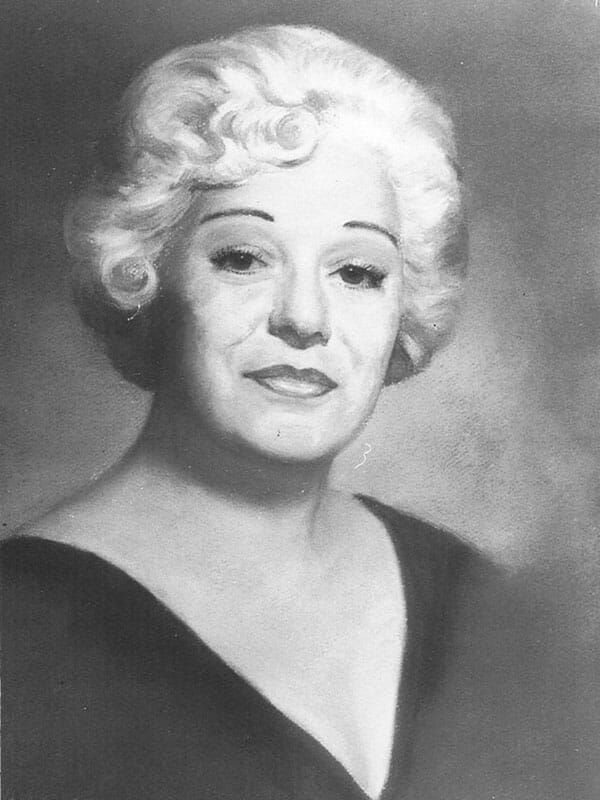
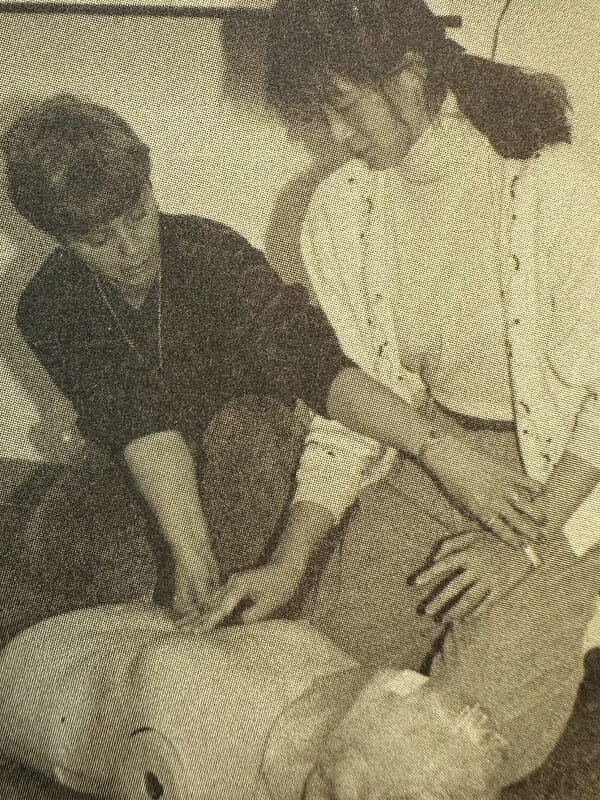
1984
Visiting Nurse and Home Care established an endowment fund to cover the cost of services for patients who are unable to pay for care.
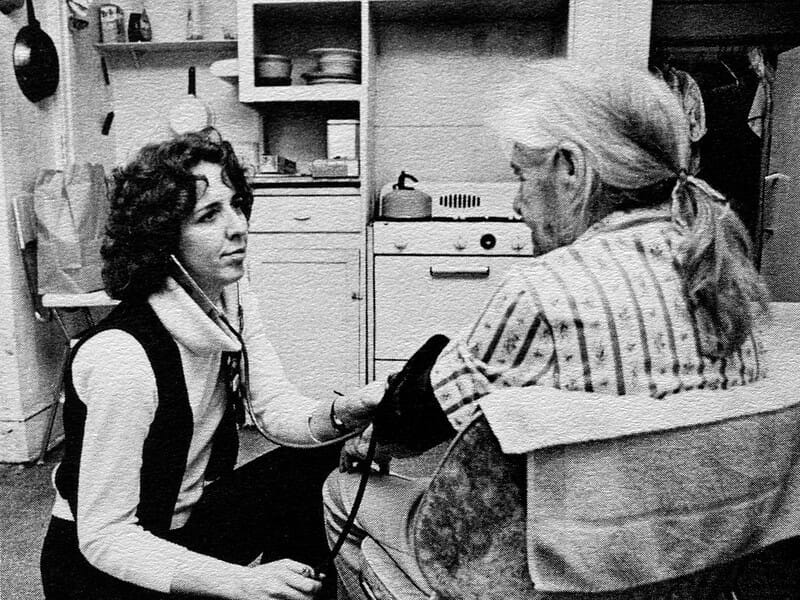
1985
The Foundation supported a capital campaign to enhance the educational and recreational facilities of Post College, which continues to serve many local residents.

1985
The Foundation convened a series of seminars on Teenage Growth and Development in order to better understand the problems and capabilities of the community's youth. A published summary of learning from the series and related research found that strengthening the educational system was key to creating a better future. In response to this study, the foundation established youth as its first formal grant priority area.

1986
A Development Committee was formed under the leadership of former president William Boise to market the Foundation and the many ways it could assist donors in having an impact in their community through a permanent endowment fund. The campaign succeeded in its goals of increasing the Foundation’s visibility among generous local residents and doubling the Foundation’s assets by 1991.
1987
Christopher A. Brooks was elected Board Chair of the foundation in 1987 and served in that role through 1990.
During Brooks' tenure, the endowment fund grew by 55%.
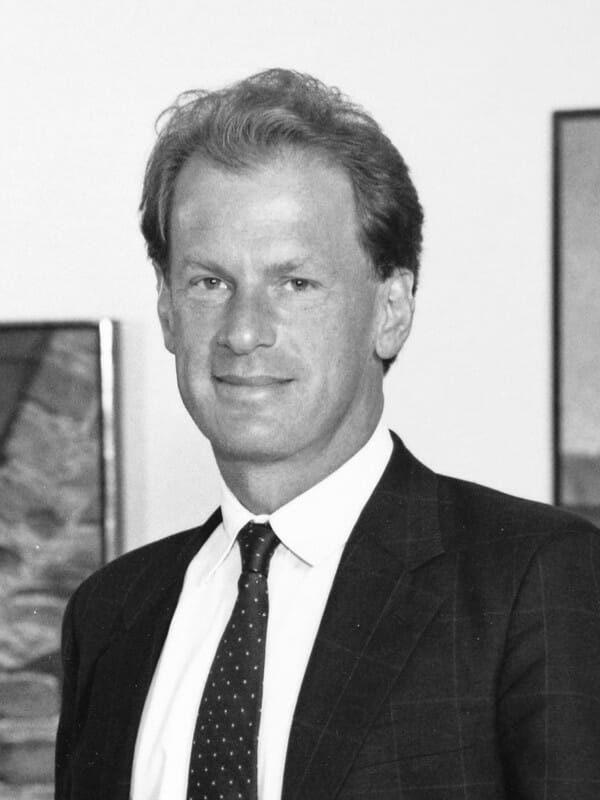
1987
In 1987, the Foundation donated a van to the Waterbury Council of Churches to deliver food and other items to soup kitchens and shelters around the city.
Soup Kitchen Director Tom Cornell, left, and Waterbury Foundation Board Chair, Chris Brooks, help two young volunteers load donations for transport.
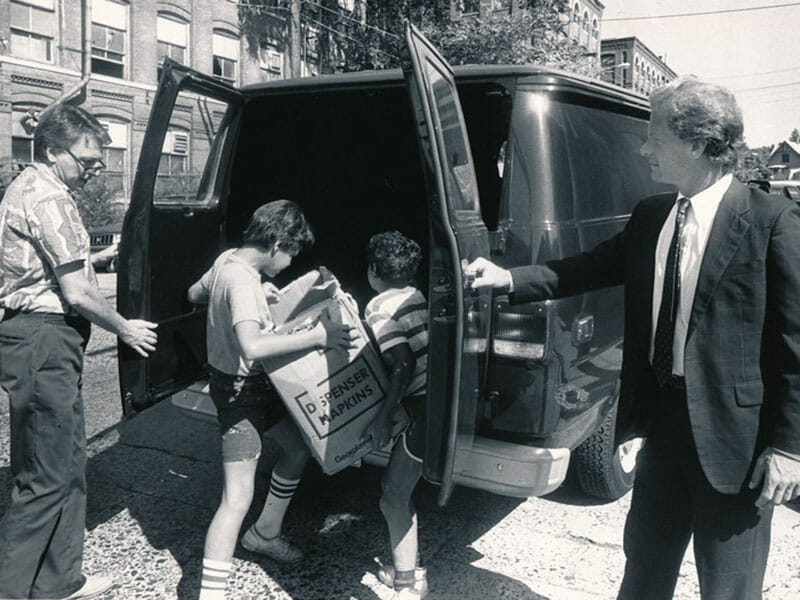
1987
Ingrid Manning (foreground) led the Foundation as its first President and CEO. Pictured here is the Foundation’s six-member staff in 1988.
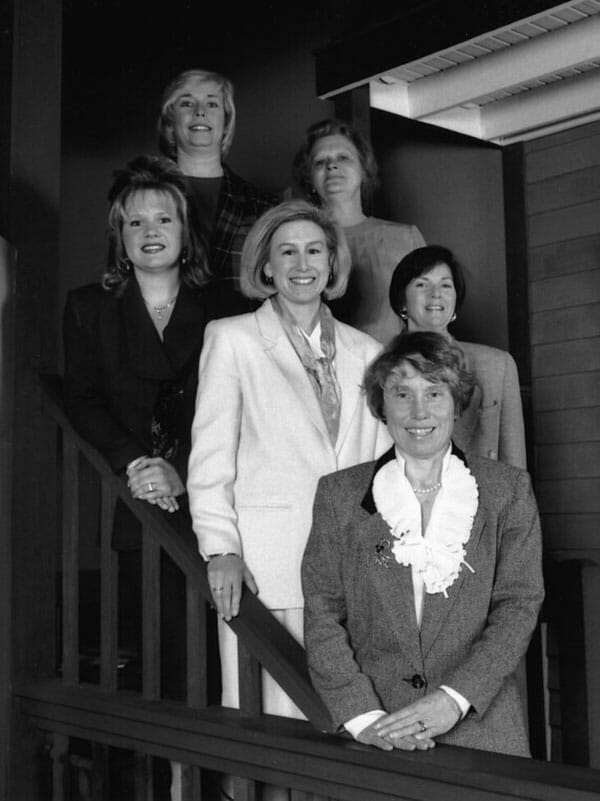
1989
The Foundation announced the first awards from its regional scholarship program in a ceremony at Waterbury's Mattatuck Museum. Thirteen scholars received a total of $10,450 in the program's inaugural year.

1989
The Foundation undertook a detailed study of 40 local arts organizations and their facilities, future needs and sources of funding. As a result of the study, the Foundation committed itself to increase support for the arts and humanities. In launching its new initiative, the Foundation made three recommendations to be realized within one year: work with the Chamber of Commerce and the City of Waterbury to establish a regional arts council, increase funding to the arts, and establish the Business Volunteer to the Arts program.
1990
1990s
1990
By 1990, the Foundation relied on standing committees made up of both Trustees and volunteer community members to undertake work related to grants, development, scholarships, and finance. The Foundation continues to rely on this model, and is grateful for the perspectives and experiences that more than 100 volunteers provide to support our work each year.
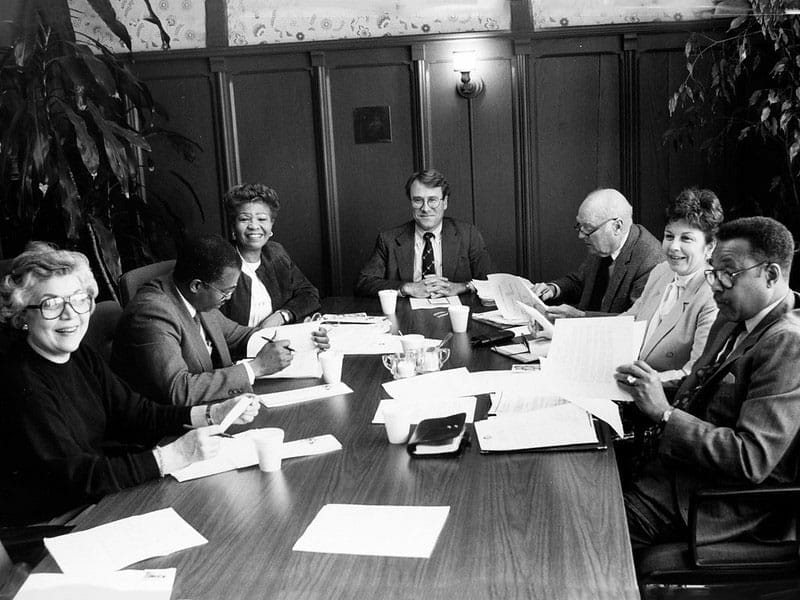
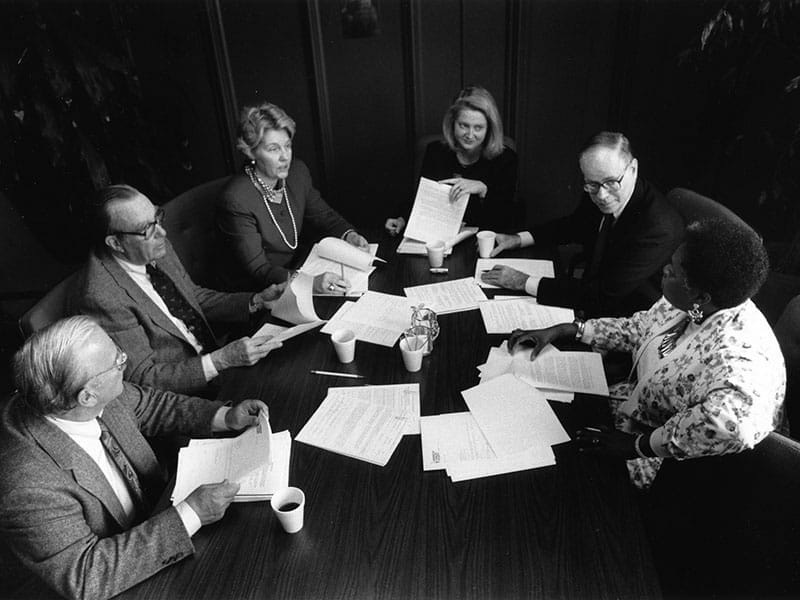
1991
Patricia B. Sweet served as Board Chair from 1991-1993. Sweet understood the Foundation’s potential and correctly forecasted that the Foundation’s endowment would reach $100 million in her lifetime.
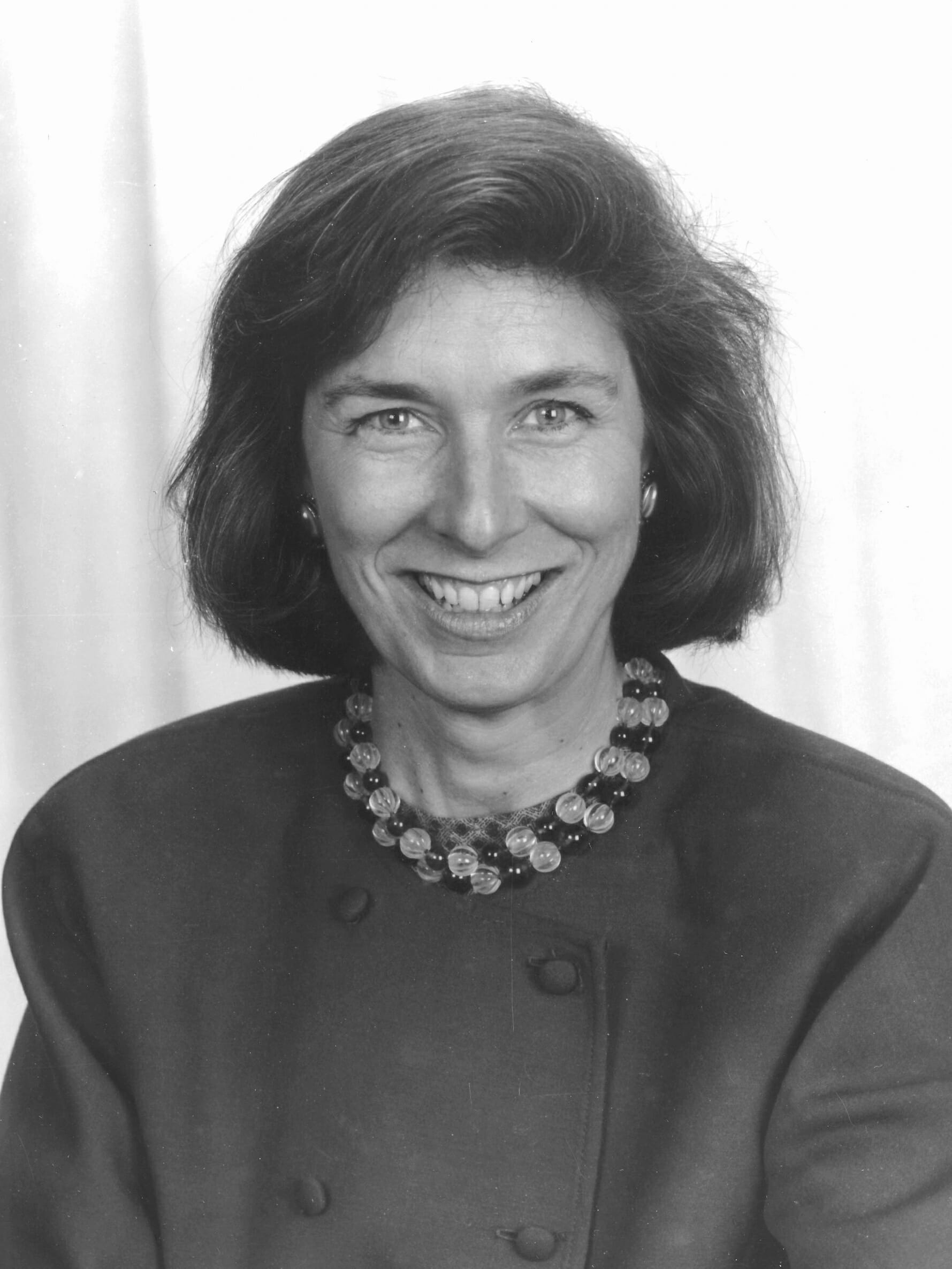
1992
The Foundation established Business Volunteers for the Arts (BVA) to provide executive-level volunteer consultants to area arts organizations to improve their internal management procedures. Among the efforts supported by BVA volunteers: Clockwork Repertory clarified board and staff responsibilities, Waterbury Ballet received help with marketing and fundraising, Litchfield Performing Arts received IT support, and Children’s Dance Theatre benefited from marketing and PR expertise.
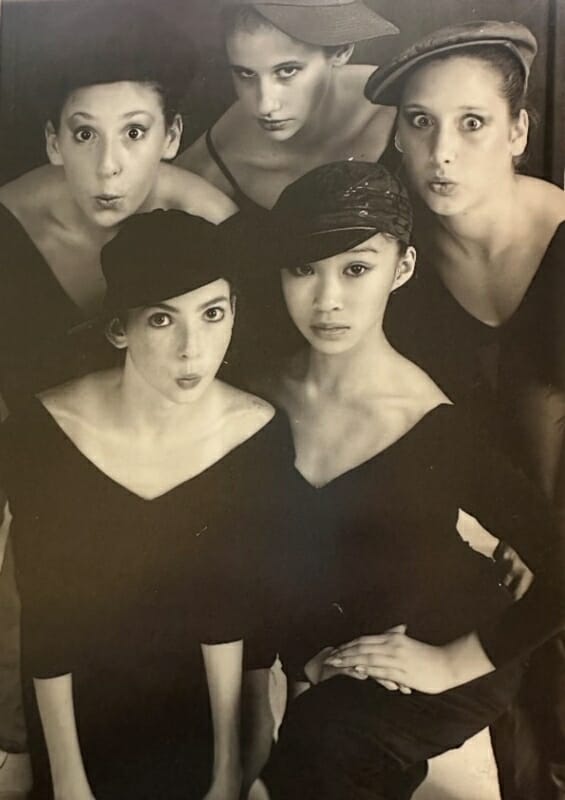
1993
Kay Campbell and Peggy Lawlor created the Women’s Fund, recruiting an initial group of 100 donors to join them. This endowed fund holds more than $650,000 today and has made hundreds of thousands of dollars in grants to benefit women and children throughout Greater Waterbury and the Litchfield Hills.
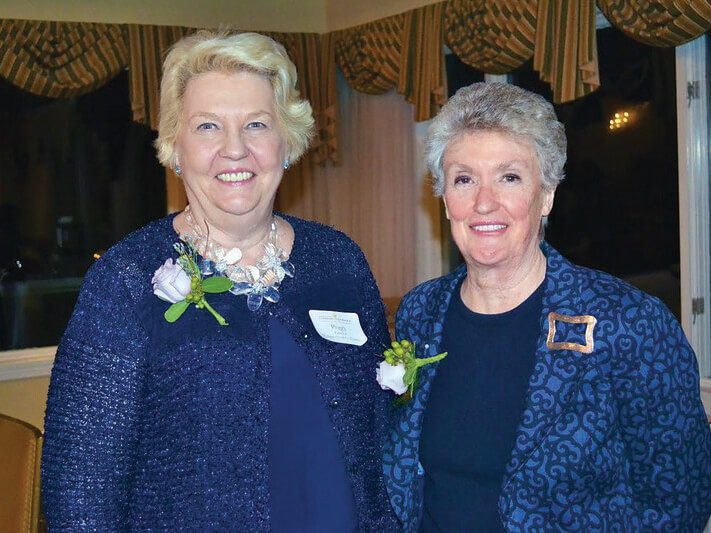
1993
The Foundation along with United Way, Centerbank, and the Waterbury Chamber of Commerce sponsored a task force to prepare recommendations to improve quality of life in Waterbury. Among the recommendations was increased support for services in the Latino community. Pictured here, children at the River Baldwin Recreation Center enjoy a story.
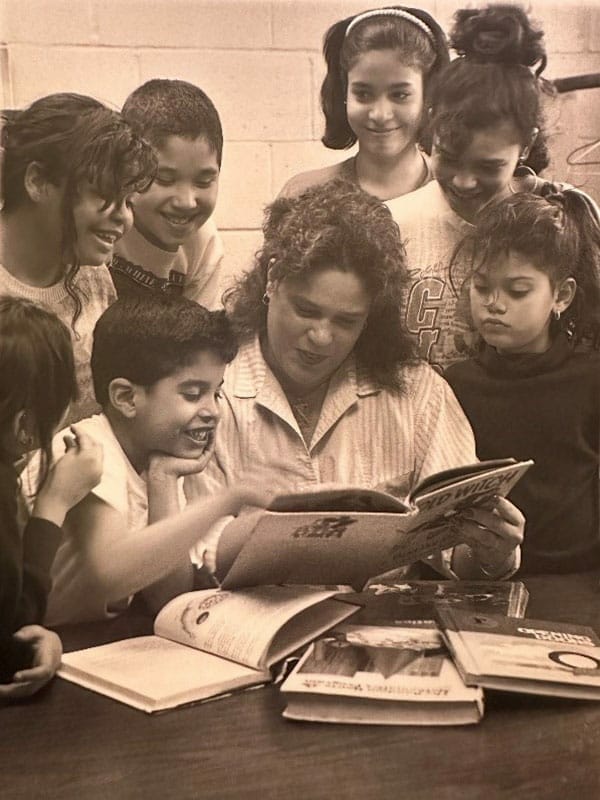
1994
Volunteers plant flowers at the War Memorial on Waterbury’s Green as part of the Downtown Beautification Fund Project.
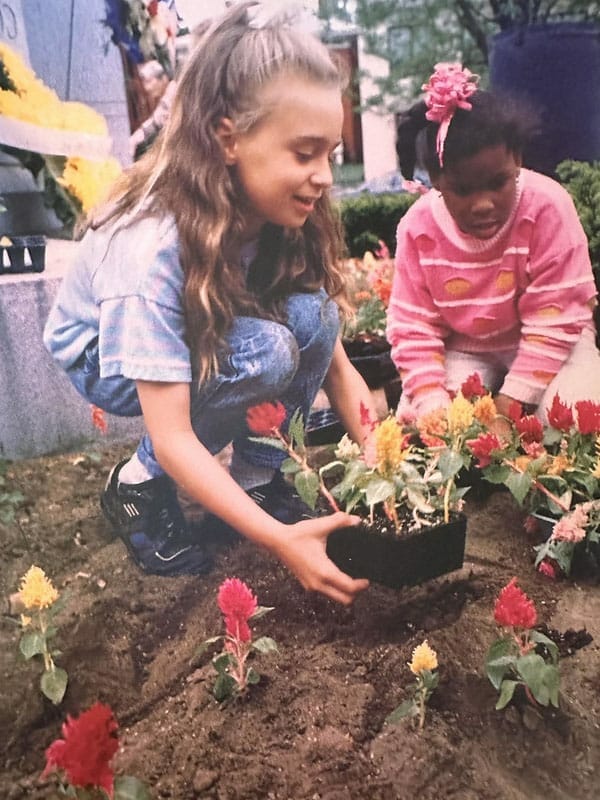
1995
A grant from the Foundation helps to establish the WOW (Walnut-Orange-Walsh) neighborhood as a Neighborhood Revitalization Zone to take to coordinate public and private investments for housing renovation, job creation and new business development. Pictured here, residents undertake a community revitalization project.
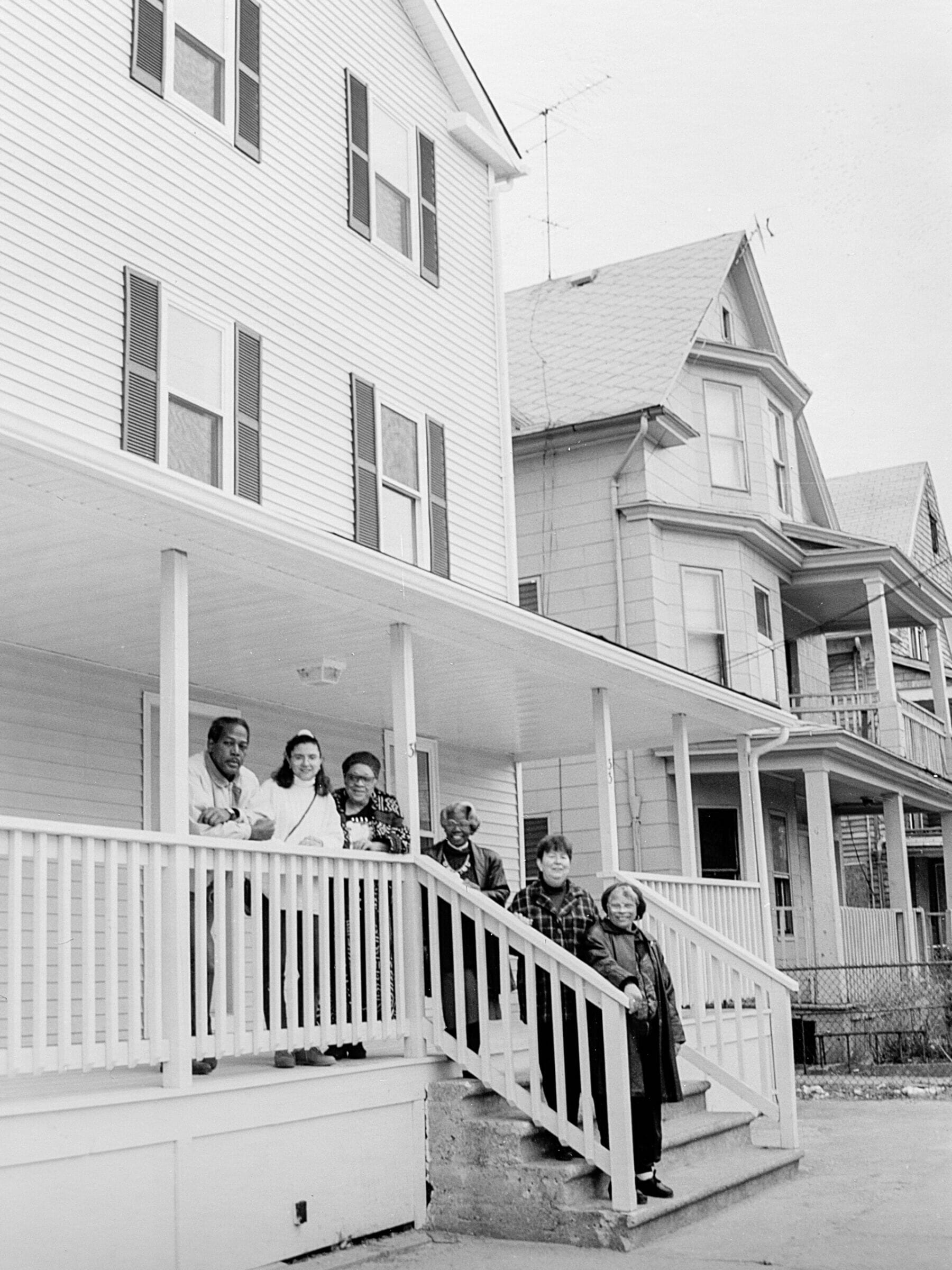
1996
The Salem Foundation, a private foundation established by the Whittemore family, transferred its assets of $1,340,865 to Connecticut Community Foundation. The fund continues to provide (advised) grants to nonprofit agencies in Naugatuck, Middlebury, Waterbury, Woodbury and Southbury. Pictured: Salem Foundation founder Harris Whittemore, Jr.
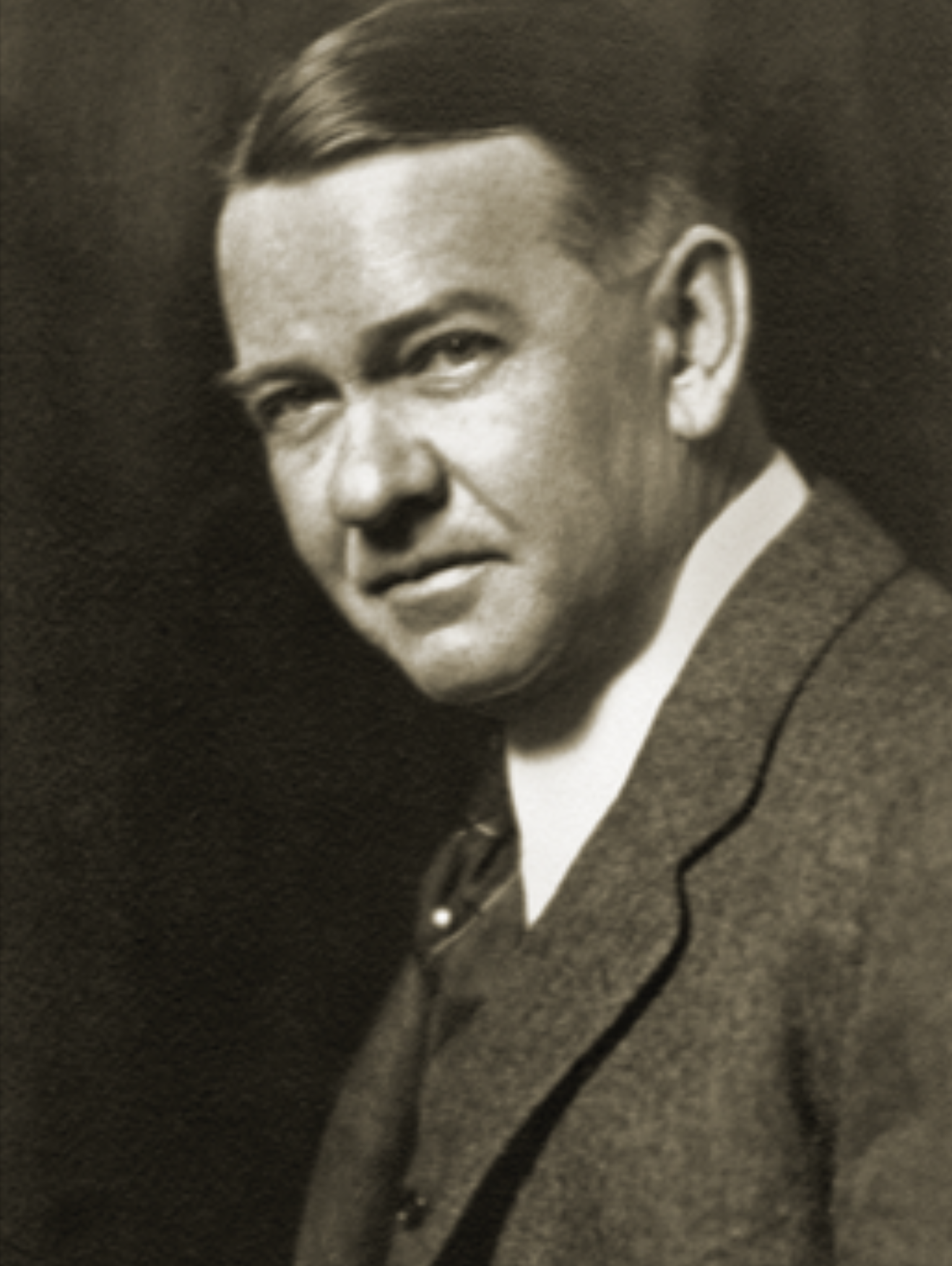
1997
W. Scott Peterson served as Board Chair from 1997-2000.
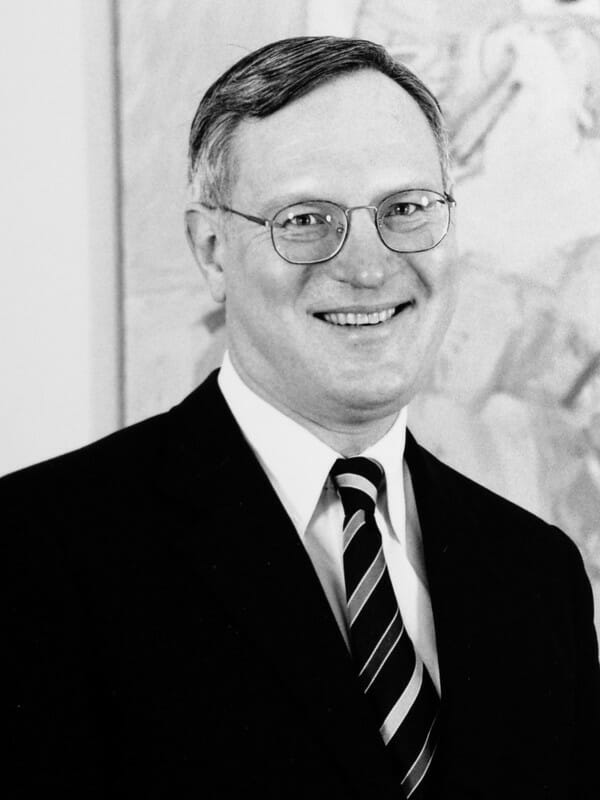
1997
Children participate in a warm-up exercise at the Cheshire Youth Theater Program.
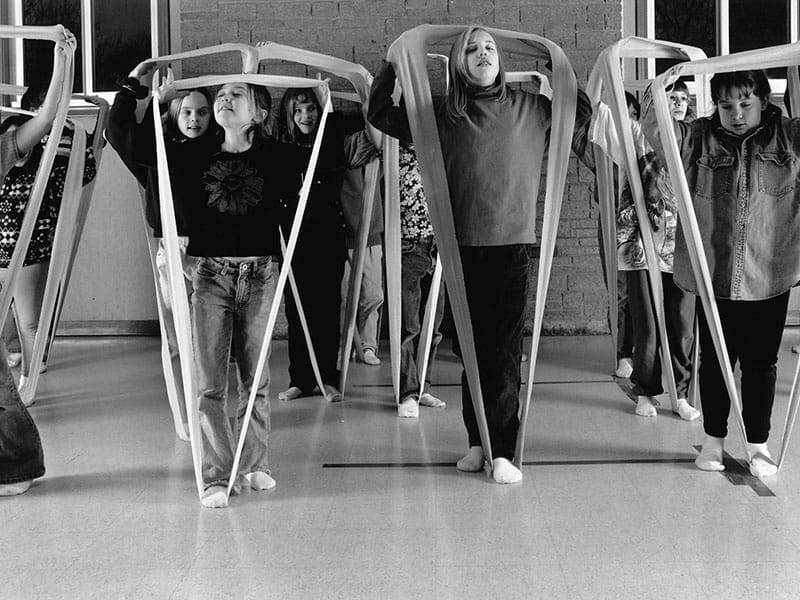
1998
In partnership with the United Way, the Foundation launches the Nonprofit Assistance Initiative (NAI), which matches nonprofit executives with volunteer mentors with the aim of strengthening organizational governance and increasing management skills. NAI also offers nonprofit training opportunities and grants to build nonprofit capacity.
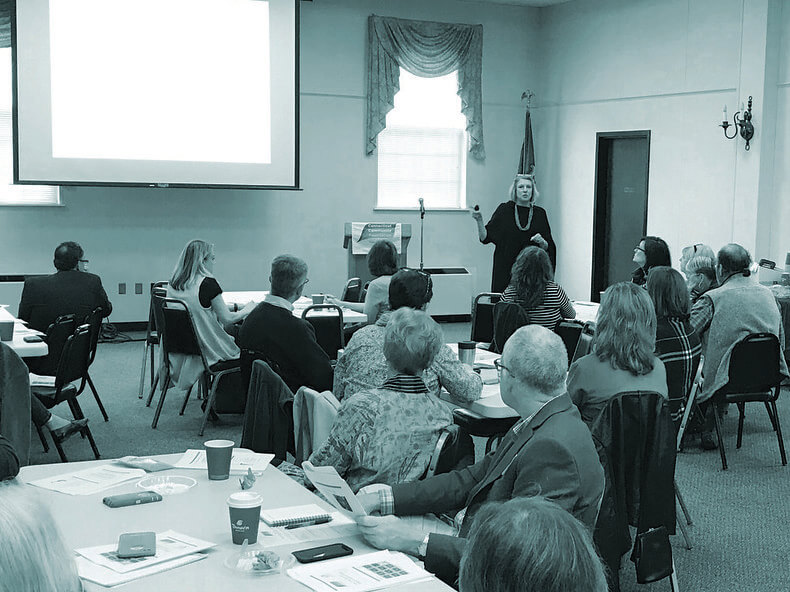
1998
YouthNET, a joint special initiative with the United Way and Leever Foundation, was established to provide after school programs to over 400 Waterbury middle school students. Here, students from the Unity Dance Ensemble demonstrate African Dance movements that they have learned as part of a YouthNet after-school initiative.
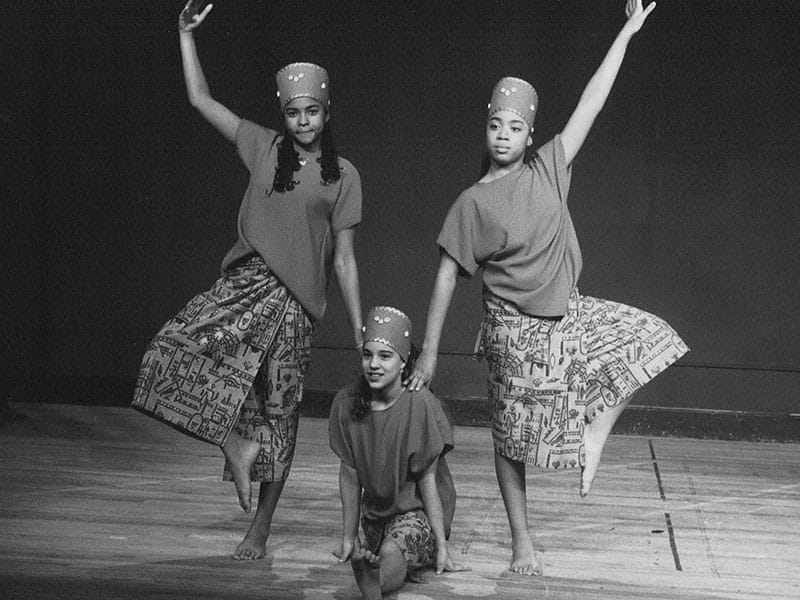
1998
The Foundation created the Youth in Action initiative in 1998. $6,000 grants were given to nine organizations to develop programs providing young people team building experiences and leadership training. During the year, the students surveyed their peers to determine what types of programs were needed in the community and then designed a request for proposals from area agencies. They evaluated the proposals and awarded grants of up to $2,000 in their community. Pictured here: Shepaug Middle School student and Youth in Action participant Luke Fraley who renovated bikes with his classmates to give to others in the community.
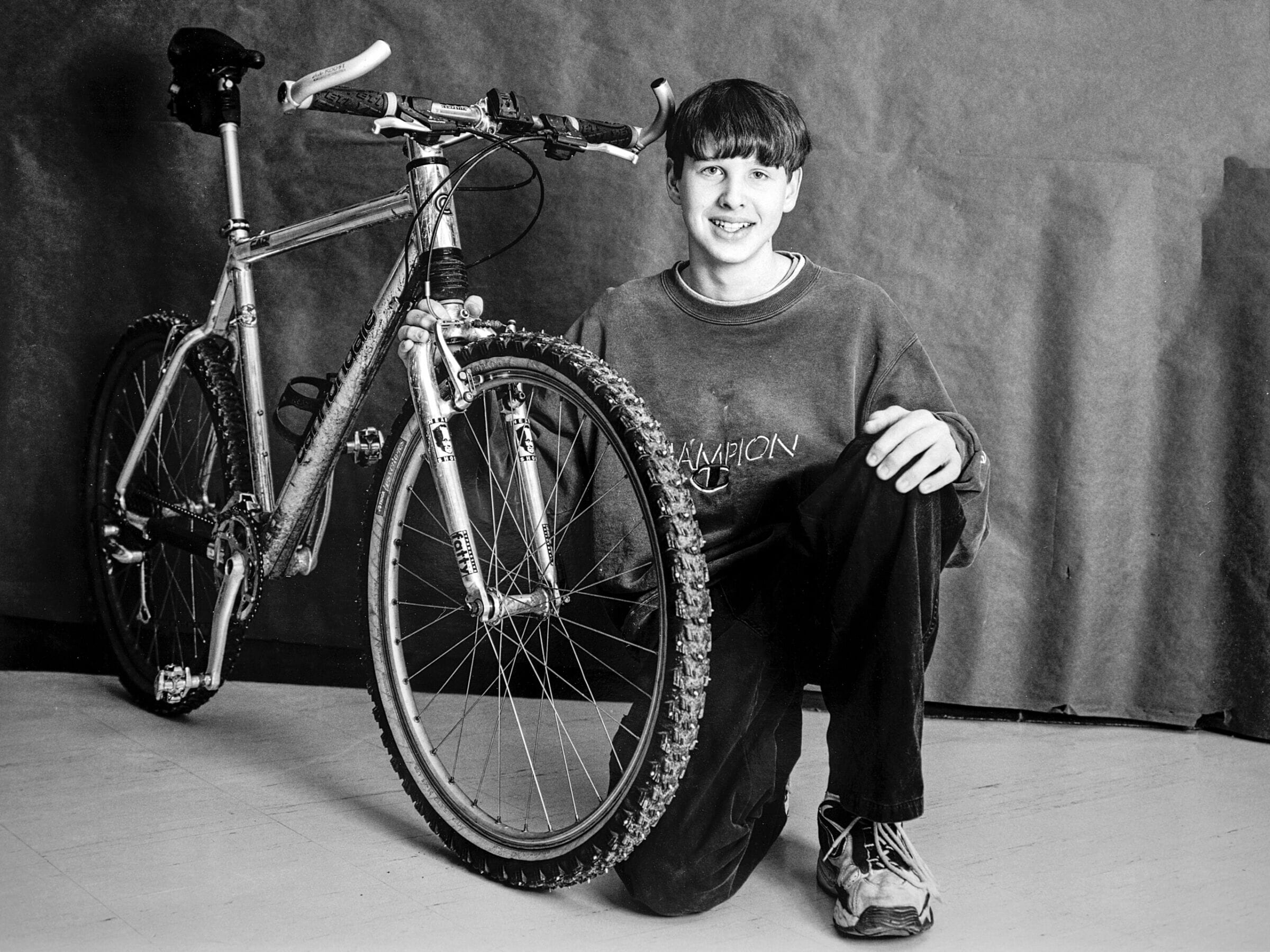
2000
2000s
2000
Lynn Franklin Henry served as Board Chair from 2000-2003.

2001
Donor, Vivian Hanson bequeaths a legacy of $1.5M to the Foundation. Her gift is the second largest in the Foundation’s history up until then. Her gift established the Vivian and Jack Hanson Scholarship Fund, which provides four-year scholarships to students from Greater Waterbury.
2002
Dance company Pilobolus received a three-year organizational development grant of $48,000. This funding was part of the Foundation’s commitment to increase support for the arts.

2003
Fred Baker served as Board Chair from 2003-2006.
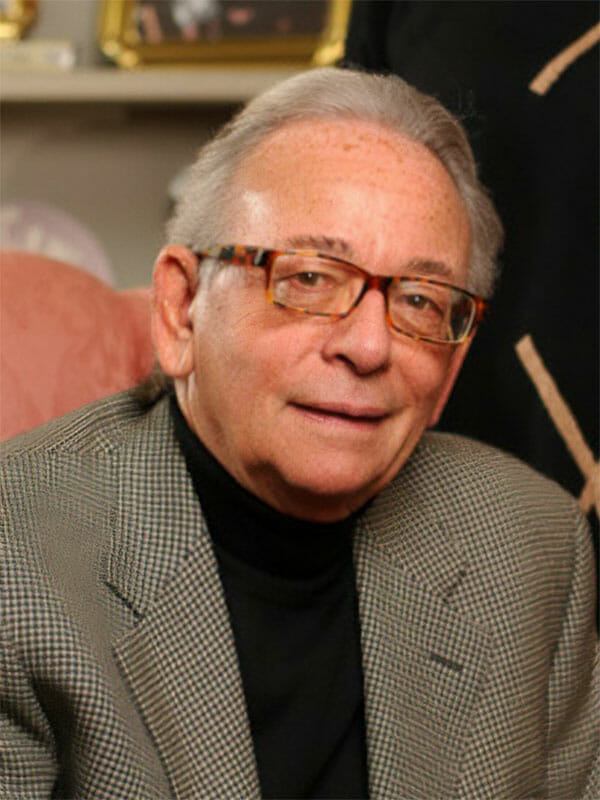
2004
The Foundation changed its name from The Waterbury Foundation to Connecticut Community Foundation to reflect its history as Connecticut’s first community foundation as well as its broader, modern service area that includes twenty-one towns in Greater Waterbury and the Litchfield Hills.
2004
The Foundation launched LitLinks, a major grant-making initiative designed to help ensure that young children in the community achieve grade-level reading proficiency by the age of 8.
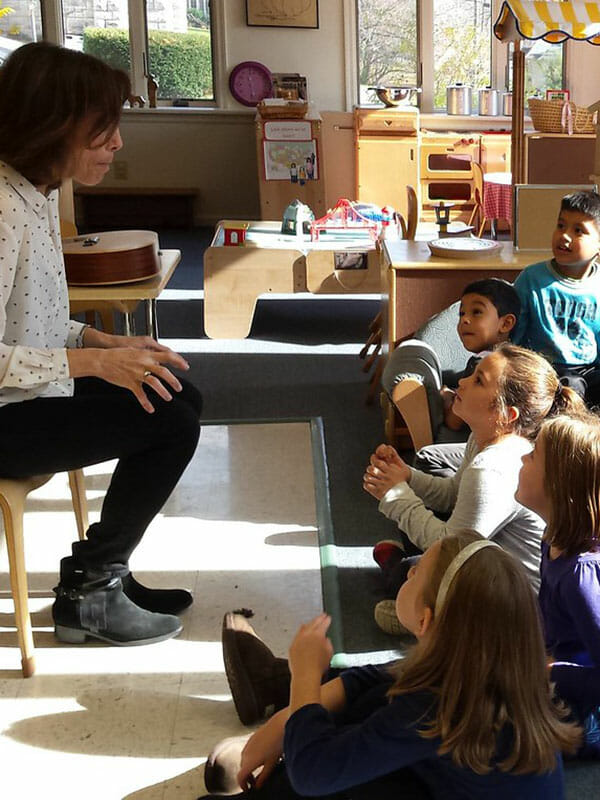
2005
Sisters Elizabeth and Nina Andersen, who retired to Heritage Village after careers in New York City, established a large scholarship fund that was funded from their respective estates. Nina Andersen said she and her sister started their fund because few scholarships were available when they were students, and their family could have used the assistance. "We wanted to do something nice for the new generation," Nina Andersen said. "We're happy to be able to provide this for somebody else." Today, the Elizabeth H. Andersen and Nina E. Andersen Scholarship Fund provides more than $180,000 each year to support local scholars in pursuing their dreams.
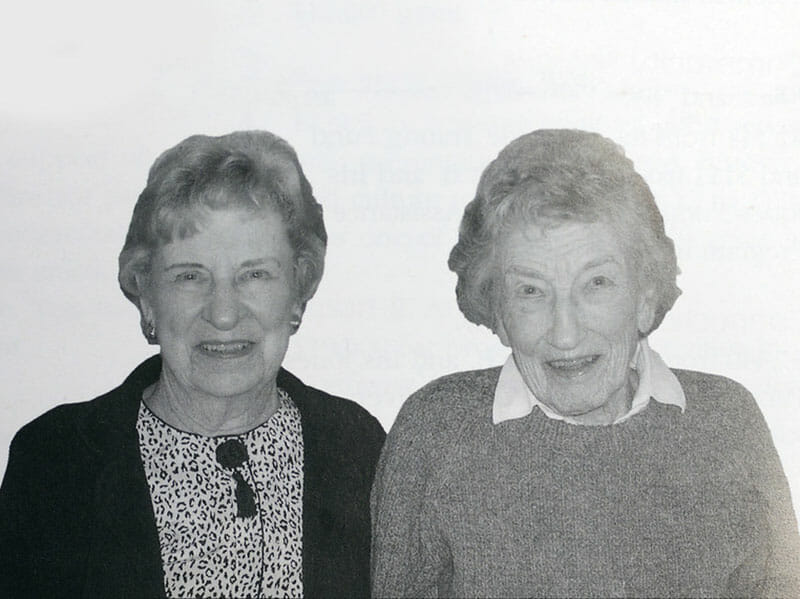
2006
Ann Burton served as Board Chair from 2006-2008.
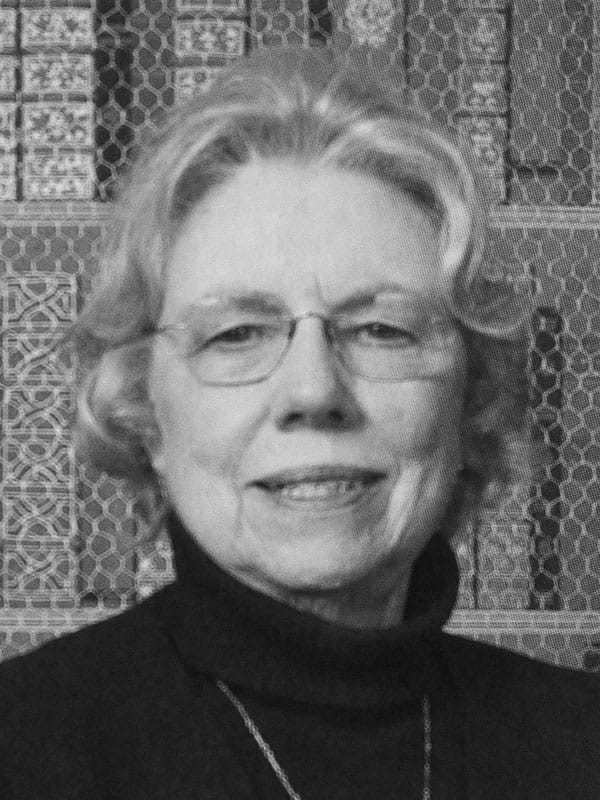
2008
An emergency fund is established in response to the 2008-2009 financial crisis, $100,000 is distributed.
The Foundation's Board of Trustees followed a three-pronged approach in response to the Great Recession. It established an emergency fund to address the dramatic increase in requests for assistance to help area residents, provided workshops and grants to agencies challenged to restructure due to financial setbacks, and focused grantmaking on innovative programs addressing long term community issues exacerbated by the economic crisis.
2008
Peter J. Jacoby served as Board Chair from 2008-2010.

2009
As a result of the sale of the East Hill Woods senior living community in Southbury, the East Hill Woods Fund is established with a gift of $9.2 million, the largest in the Foundation’s history. The fund supports efforts of local nonprofits and municipalities that offer services and opportunities to help older adults in our region age successfully and remain healthy, informed and engaged.

2010
2010s
2010
2010-2012 Richard Lau served as Board Chair.
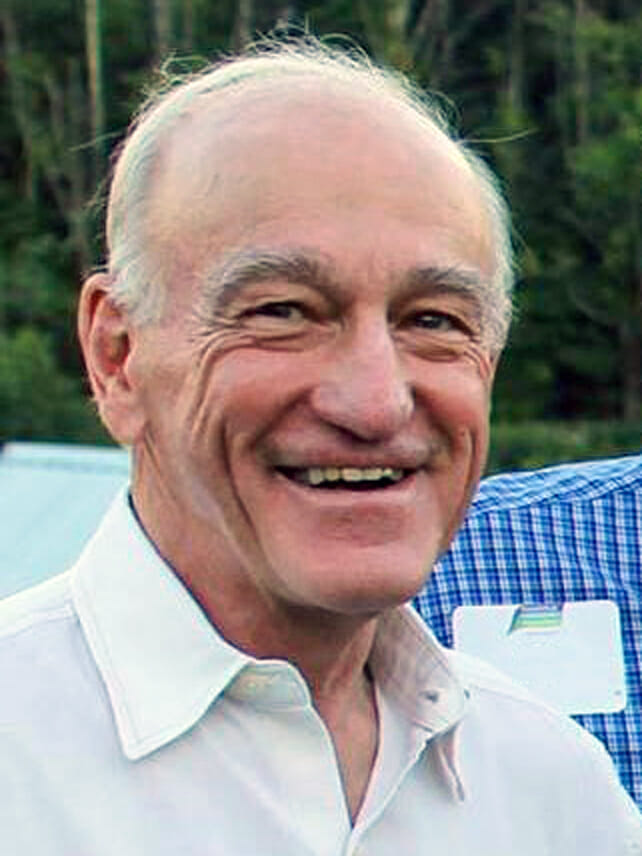
2012
Paula Van Ness became the Foundation’s second President and CEO in 2012, following on the heels of Ingrid Manning’s 30-year tenure.
Among Paula’s first efforts was to lead the Foundation in crafting a new strategic plan and adopting a new mission statement.

2012
Supported by the East Hill Woods Fund, the Foundation launches BRASS (Bringing Resources to Action to Serve Seniors), a collaboration among the City of Waterbury and several nonprofit organizations to create a “senior center without walls” to serve older adults throughout Waterbury. Pictured here, more than 100 seniors from 5 area senior centers attended a BRASS coffee hour to meet the staff and learn about the new services and programs offered for Waterbury seniors through BRASS.
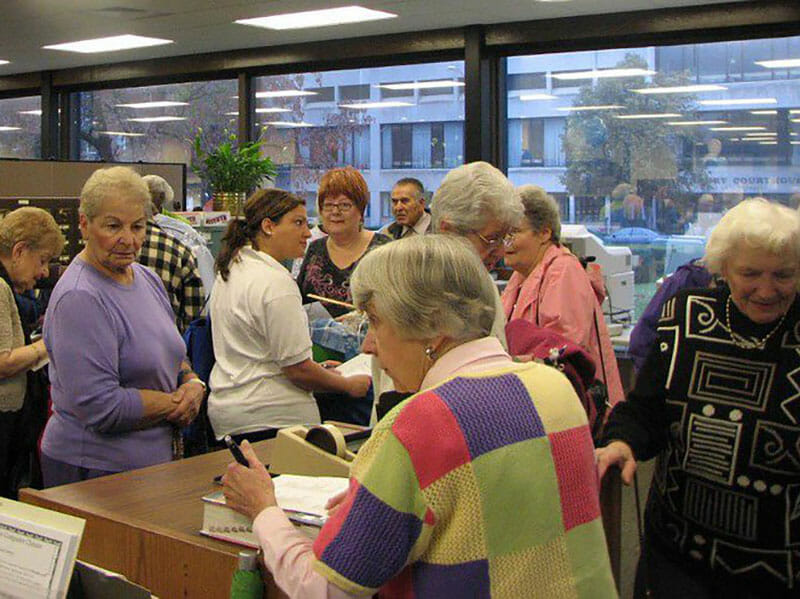
2013
In its 90th year, the Foundation launches Give Local Greater Waterbury and Litchfield Hills, a 36-hour online giving campaign that enables nonprofits to raise unrestricted funding from thousands of area donors. The inaugural Give Local event raised $520,000 for 125 nonprofits. Every year since, the Foundation has hosted a Give Local event, with the generous support of presenting sponsor Ion Bank Foundation. Since 2013, Give Local has generated more than $15 million in funding for local nonprofits through tens of thousands of gifts from local donors.
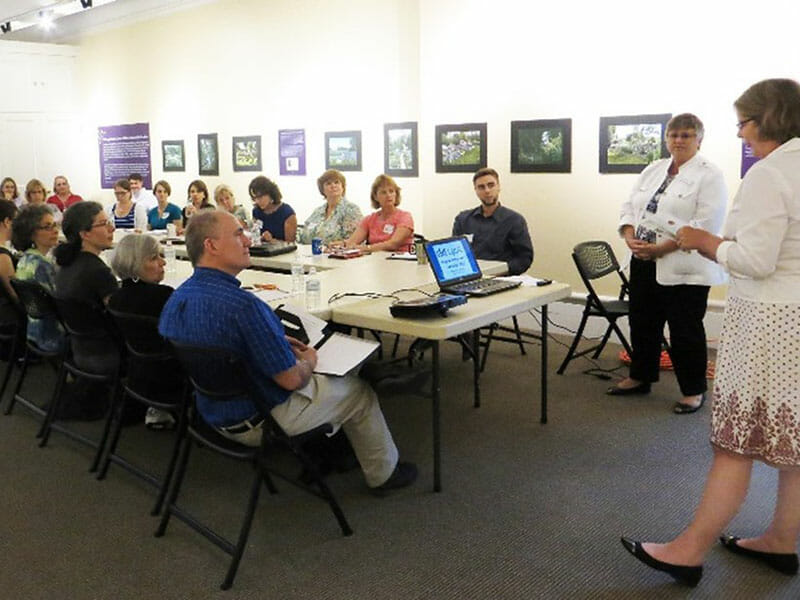
2013
2013-2014 Jack Baker served as Board Chair.

2015
2015-2017 Martha Bernstein served as Board Chair.
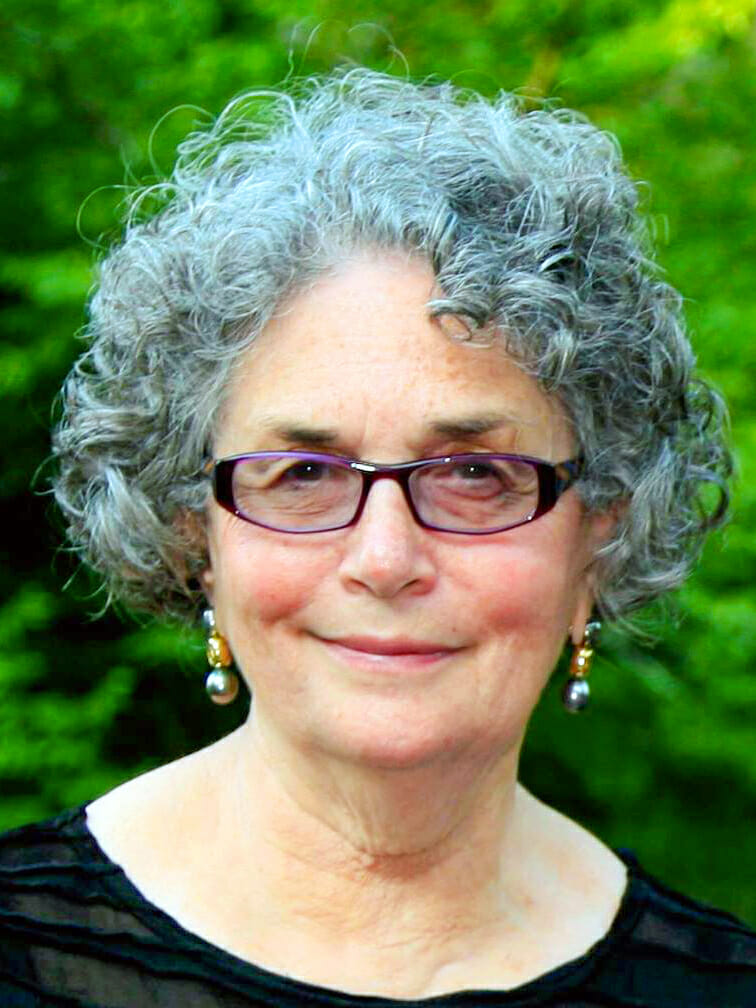
2016
The Foundation launched the Grassroots Leadership Program to support residents and community-based organizations working to make positive change in Waterbury. The Grassroots Grant initiative is created in partnership with Waterbury residents and leaders, offering funding and support for local organizers.
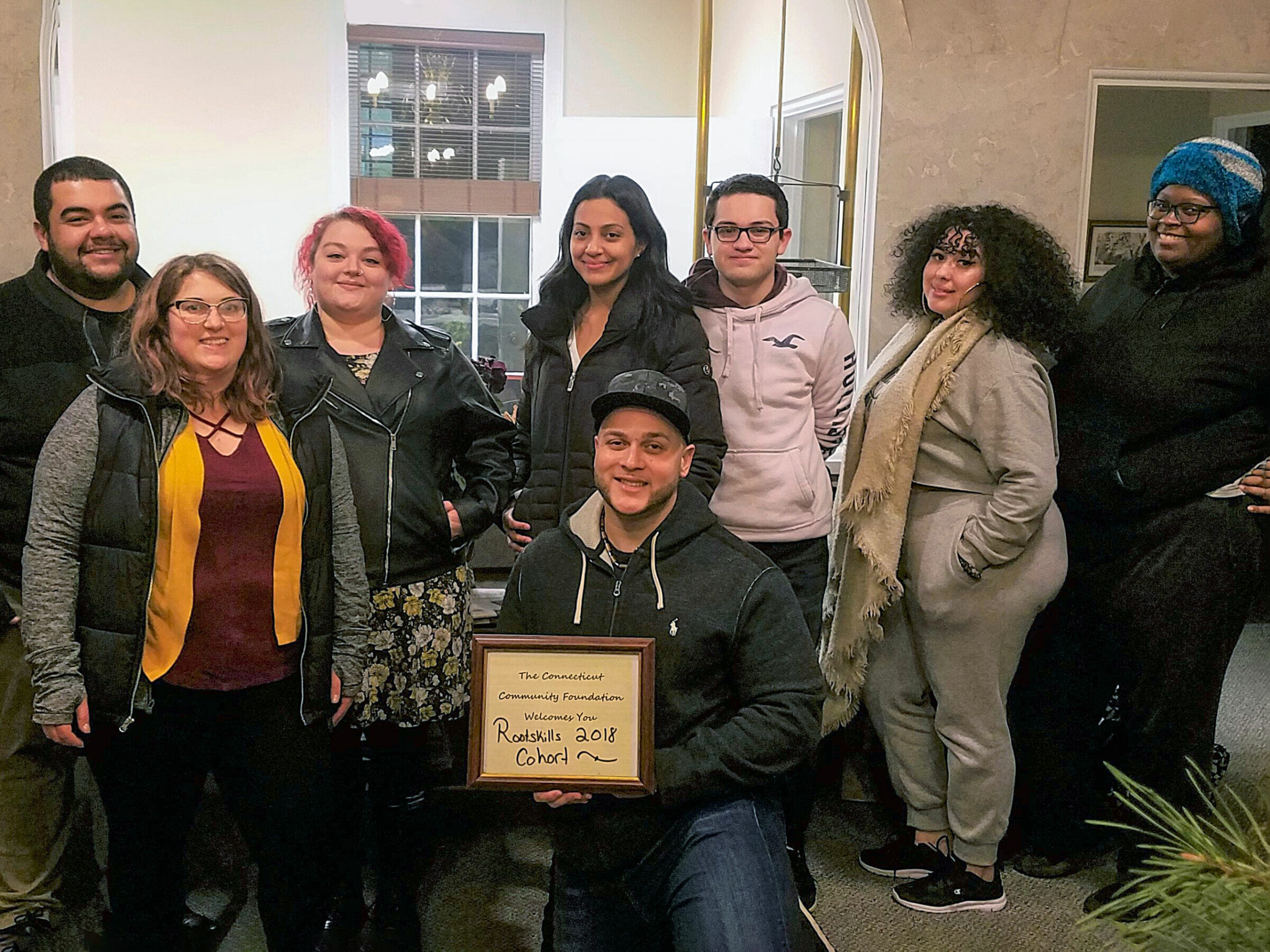
2016
The Foundation has been actively involved in supporting water projects and initiatives over the past two decades. Starting in 2000, Connecticut Community Foundation began to help fund a range of organizations and efforts, from practical education and water testing to river/lake cleanups, awareness building, and convening events. Most recently, Waterbury Police Activity League (PAL) and the Naugatuck River Revival Group were recognized with a Trustee Fund Award for their innovative and collaborative work in creating the River Brigade, pictured here.


2017
Dozens of local women came together to form the Women's Giving Circle. Together, they pool their gifts, explore issues affecting local women and girls, and make impactful grants that benefit local residents. Since it began, the Circle has made $143,827 in grants to local organizations whose work addresses priorities affecting women and girls.
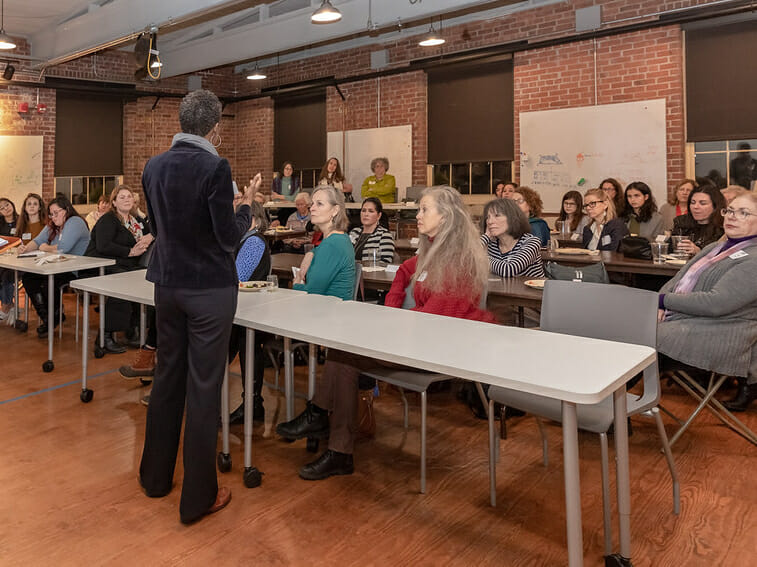
2017
Julie Loughran became the Foundation’s third President and CEO following the retirement of Paula Van Ness. Assets reach $100 million.
During her tenure, the Foundation begins a series of comprehensive program evaluations that lead to a needs assessment and a new strategic plan grounded in data and newly articulated organizational values.
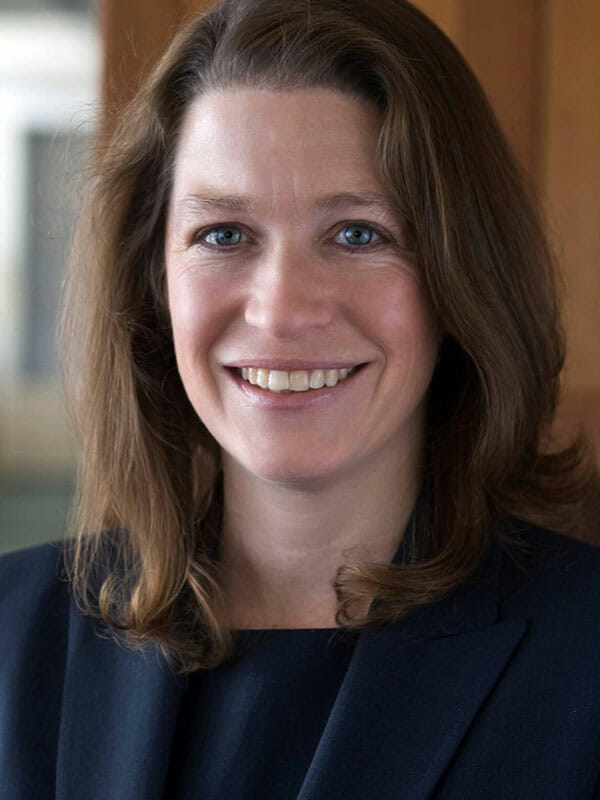
2018
2018-2019 Doug Johnson served as Board Chair.
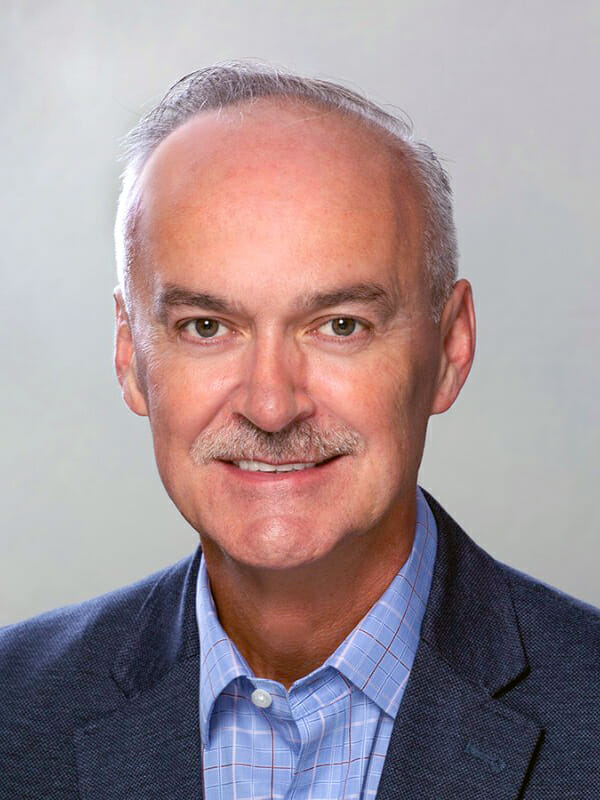
2018
In 2018, the Foundation engages Catchafire.org, a national online platform, to connect nonprofit grantees with volunteers from all over the country who offered skills and expertise that the organizations couldn’t typically afford or access. The Foundation made Catchafire available to 150 nonprofits serving Greater Waterbury and the Litchfield Hills in its pilot year.

2018
Kevin Jennings of Southbury, Deb Fuller of Woodbury, Christopher Hermann of Washington and a whole community of people combine their resources and efforts to create the Pride in the Hills Fund at Connecticut Community Foundation. The fund aims to celebrate and improve the lives of lesbian, gay, bisexual, transgender and queer/questioning (LGBTQ+) people in Greater Waterbury and the Litchfield Hills for generations to come.


2019
As part of a robust strategic planning process, the Foundation creates a detailed needs assessment to determine how to use its resources most effectively—human as well as financial—to serve the community in the coming years to address deep disparities in opportunity, access, and outcomes for local residents. The data along with newly articulated organizational values lead the Foundation to adopt a new mission and a detailed strategic plan grounded in a vision of an equitable, inclusive, just and vibrant community in which all residents have what they need to thrive.
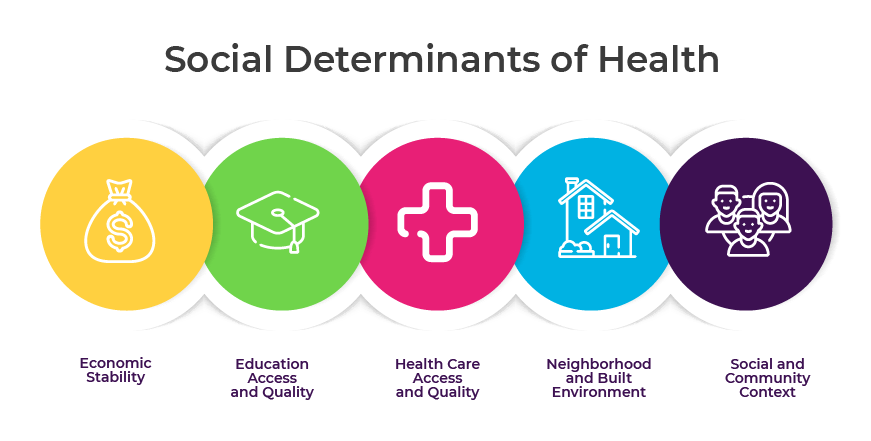
2019
Thanks to the vision of Brass City Harvest of Waterbury, construction crews started digging to turn a vacant lot on Mill Street into what eventually became a location for Connecticut’s first regional urban food hub.
Connecticut Community Foundation was one of the first funders of Brass City Harvest when it launched in 2008. Since then, the Foundation has supported the organization's nutrition education for children and older adults, development of agricultural resources for underserved communities, and mobile farmer’s market.
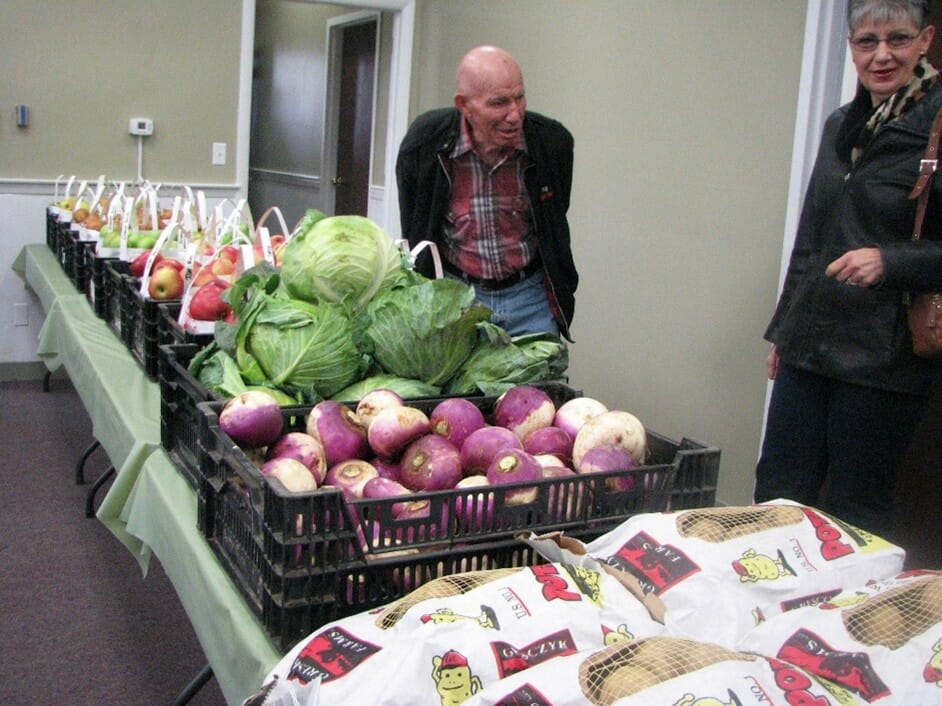
2020
2020s
2020
Connecticut Community Foundation and the United Way of Greater Waterbury joined together during the onset of the pandemic to create the COVID-19 Response Fund. Thanks to a tremendous outpouring of support from donors throughout Greater Waterbury and the Litchfield Hills, between March 2020 and July 2021, we provided over $789,000 to local organizations at the frontlines of the coronavirus outbreak. One initiative (pictured here) involved distributing 400,000+ pieces of protective gear to 109 organizations. Watch more about this effort on YouTube and read some stories about the impact these funds had in the community.
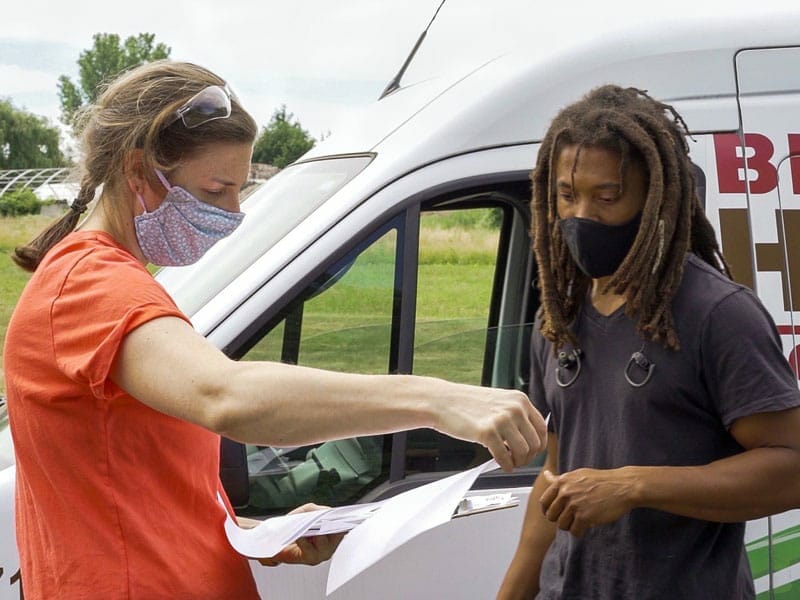

2020
In the fall of 2020, the Foundation established the COVID-19 Recovery & Resilience Fund to invest in long-term capacity building and systemic change focused on equitable outcomes for residents. Through 2022, the fund distributed more than $500,000.

2020
2020-2022 Kathy Taylor served as Board Chair.

2020
Based our Community Needs Assessment study and the Foundation’s strategic planning, the Foundation launches its new strategic direction to use equity as its touchstone and as the prism through which it will decide how best to marshal its resources to have the greatest impact for the good of the entire community. This is achieved primarily through the Foundation's new grantmaking guidelines. Committees are trained in how bias shapes our understanding of your work. Three new priority areas emerge: Building Equitable Opportunity, Health and Environmental Justice, and Strengthening NonProfits.

2021
Five years after its founding, the Grassroots Leadership Program has distributed more than $200,000 to support and strengthen grassroots efforts in Waterbury. Funding supports equitable efforts to revitalize communities, influence local systems, organize local residents, and expand the capacity of community leaders.

2021
The Foundation continues to support nonprofits throughout the region to become stronger and more effective. Offerings include connections to skilled, pro bono volunteers through the nationwide Catchafire platform; learning opportunities and professional development for nonprofit staff, volunteers, and boards; long-term, small group learning cohorts; and more than $100,000 annually in grants that invest in organizational infrastructure in the vital areas of financial management, technology, fund development, communications, and leadership.
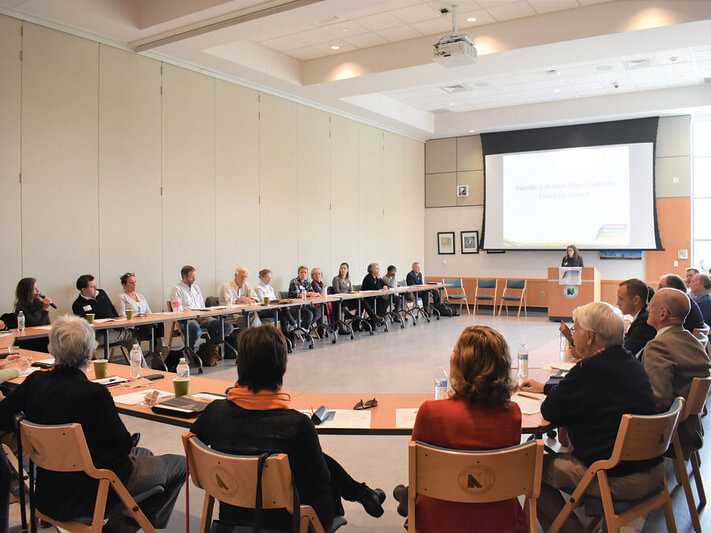
2021
Improving health outcomes remains among the Foundation’s top priorities. We support programs, advocacy, and system change efforts that address health disparity and expand equitable access to quality health care. We distribute more than $500,000 each year to address the community’s health needs. And we still make an annual grant from the Jennie H. Morton Memorial Fund to support visiting nurses—just as Alice Chase trusted we would back in 1929.
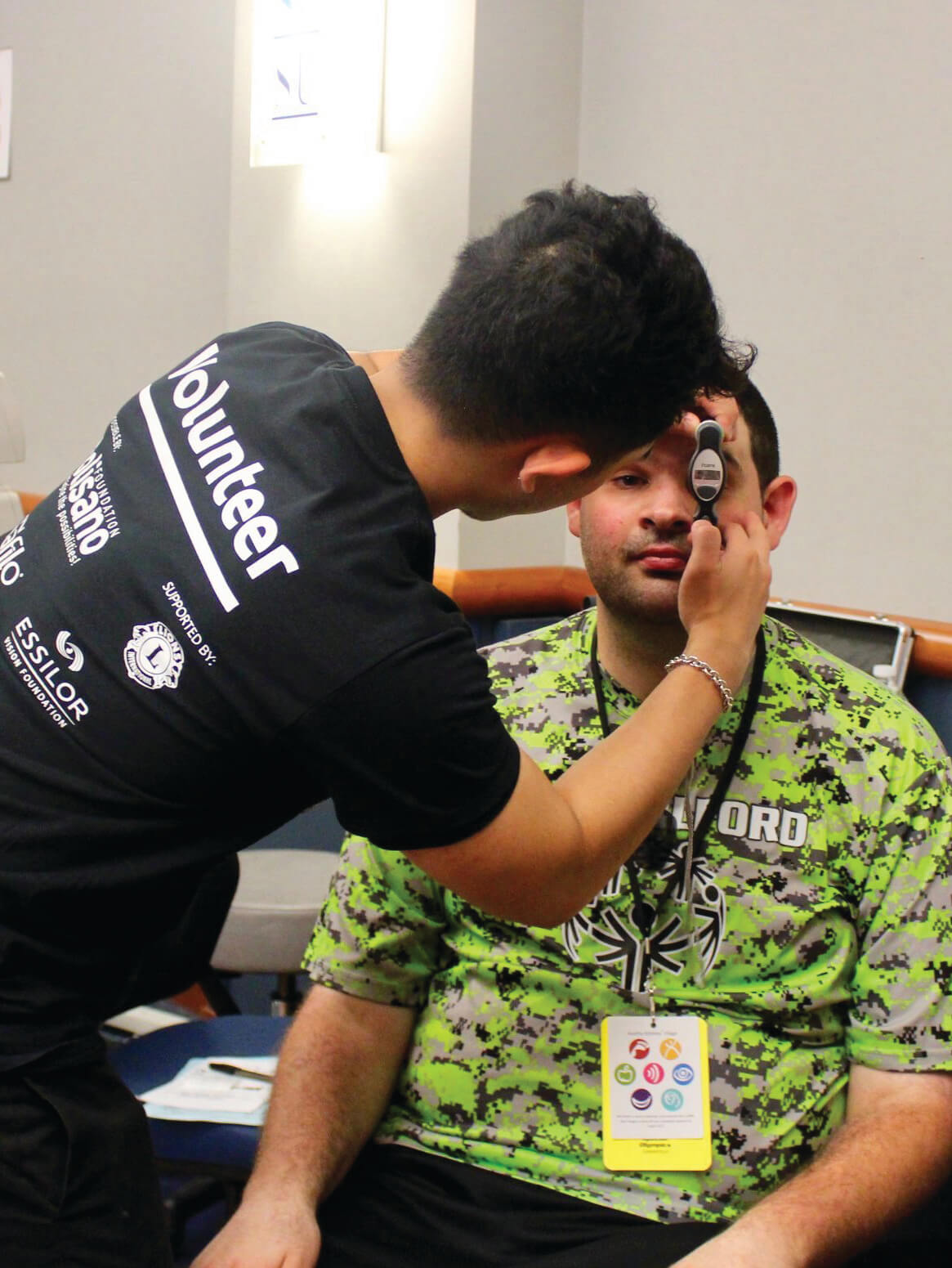
2021
Nearly 400 local students received nearly $1,000,000 in scholarship awards. Connecticut Community Foundation administers more than 150 scholarship funds established by donors eager to expand opportunities for students and support them on their paths to a bright tomorrow. This photo shows 2017 scholarship recipients at a reception held in their honor at Naugatuck Valley Community College.
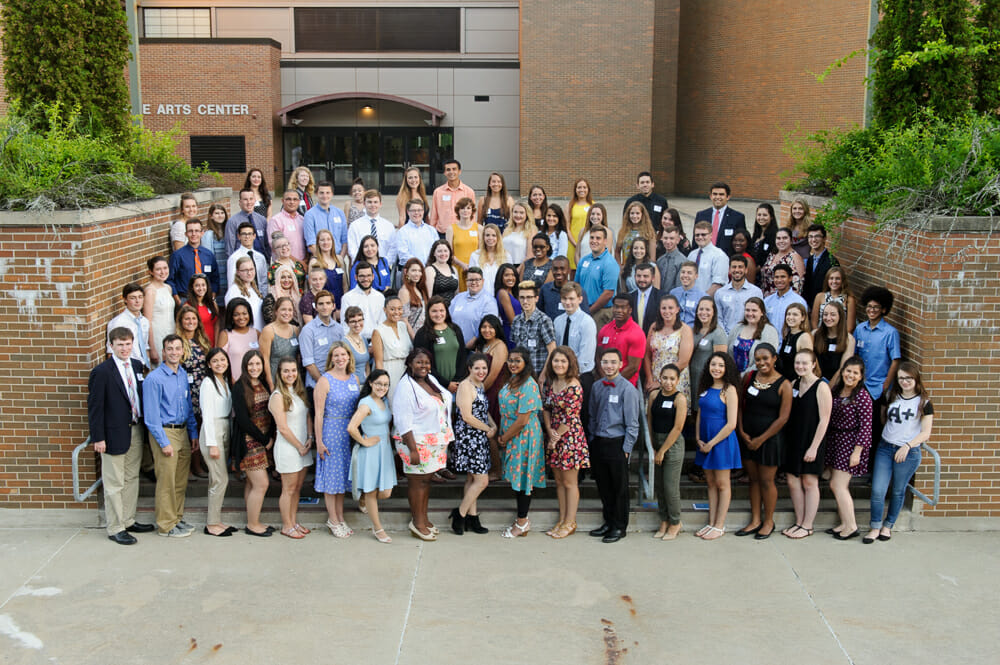
2021
The Waterbury Black Giving Circle (WBGC) is formed — a group of Black changemakers in Waterbury who came together for the first time to celebrate Juneteenth and rally a network of individuals to come together to pool their collective charitable dollars to have a greater impact and make a difference in the Black community.

2021
We launch a celebration of our 1923 Legacy Society Members. We have a lot of reasons to celebrate our legacy donors' generosity and the huge impact they have partnering with Connecticut Community Foundation not just today but years, decades, generations from now.
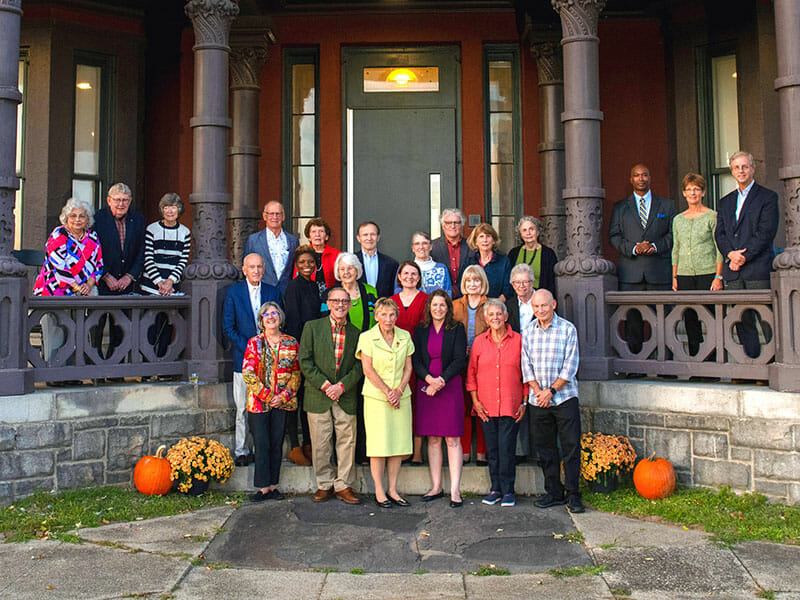
2021
Looking toward the next hundred years, the Foundation launched the Second Century Fund. Your gift to this unrestricted endowment fund will help ensure that the Foundation has the resources it will need to meet community challenges—including those we can’t even foresee—that are sure to arise over the generations to come. Thanks to several leadership donors, the first $200,000 in gifts to the Second Century Fund will be matched dollar-for-dollar.
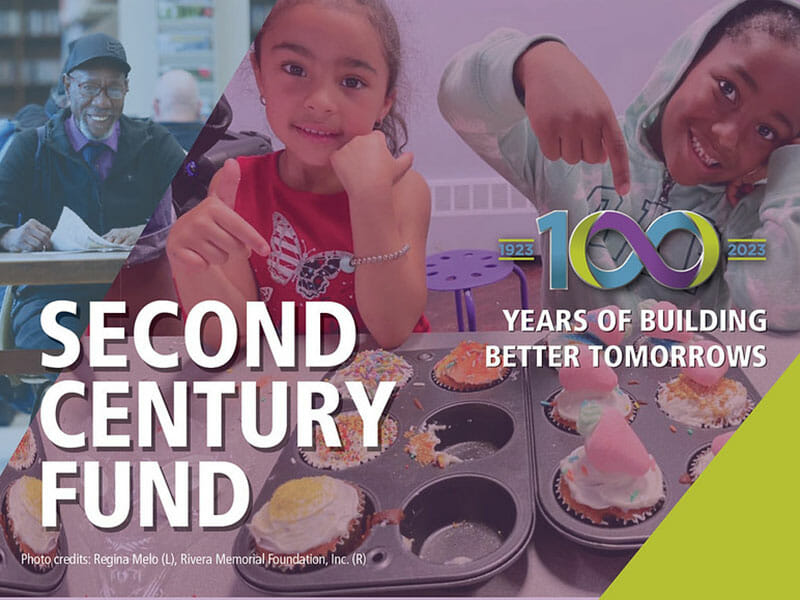
2022
2022-present Michael Giardina serves as Board Chair.
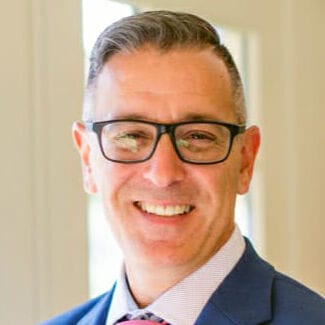
2023
Present-day staff
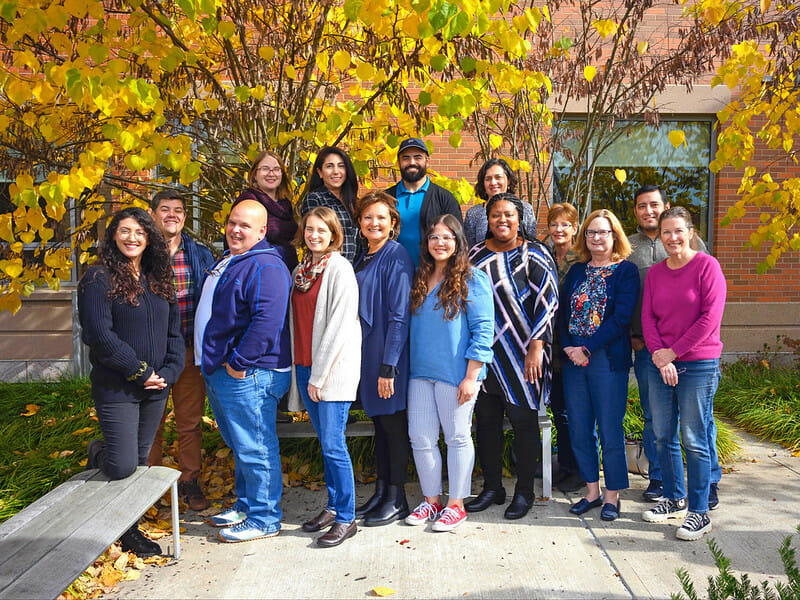
Let’s Build
Tomorrow Together
Donate to The Second Century Fund




